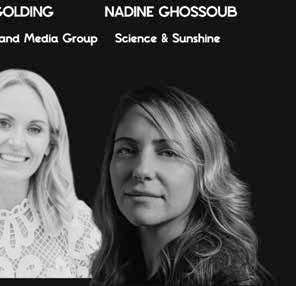

























LION’S SHARE OF THE REGION

































Hasan Nergiz, MD of Al-Fu aim Electric Mobility Company, which represents BYD in the UAE and Saudi Arabia, reveals the regional impact of the Euro campaign.

Motivate Media Group
Head Office: 34th Floor, Media One Tower, Dubai Media City, Dubai, UAE. Tel: +971 4 427 3000, Fax: +971 4 428 2266. Email: motivate@motivate.ae Dubai Media City: SD 2-94, 2nd Floor, Building 2, Dubai, UAE. Tel: +971 4 390 3550, Fax: +971 4 390 4845 Abu Dhabi: Motivate Advertising, Marketing & Publishing, PO Box 43072, Abu Dhabi, UAE. Tel: +971 2 677 2005, Fax: +97126573401, Email: motivate-adh@motivate.ae
Saudi Arabia: Regus Offices No. 455 - 456, 4th Floor, Hamad Tower, King Fahad Road, Al Olaya, Riyadh, KSA. Tel: +966 11 834 3595 / +966 11 834 3596. Email: motivate@motivate.ae
London: Motivate Publishing Ltd, Acre House, 11/15 William Road, London NW1 3ER. Email: motivateuk@motivate.ae www.motivatemedia.com
EDITORIAL: Motivate Media Group Editor-in-Chief Obaid Humaid Al Tayer | Managing Partner and Group Editor Ian Fairservice Campaign Middle East Editor Anup Oommen | Reporter Ishwari Khatu | Junior Reporter Shantelle Nagarajan
DESIGN: Senior Designer Thokchom Remy
ADVERTISING ENQUIRIES: Chief Commercial Officer Anthony Milne | Publisher Nadeem Ahmed Quraishi (nadeem@motivate.ae) Sales Manager Tarun Gangwani (tarun.gangwani@motivate.ae)
PRODUCTION: General Manager S. Sunil Kumar | Production Manager Binu Purandaran | Production Supervisor Venita Pinto
HAYMARKET MEDIA GROUP: Chairman Kevin Costello | Managing Director Jane Macken
which is the copyright of Haymarket. Campaignis a trademark of Haymarket and is used under licence. The views and opinions expressed within this magazine are not necessarily those of Haymarket Magazines Limited or those of its contributors.





There was a time when I used to walk into the office on a Friday morning and ask: “What’s that smell?” I’d wait for the confused expressions before I added: “That’s the whiff of the weekend.” (Yeah, that’s a dad joke.)
When I tried that in the Campaign Middle East newsroom, I wasn’t met with confusion. Instead, I received a response right off the bat: “That’s the beautiful aroma of change.”
I couldn’t agree more. This was not just a reference to the fact that there’s a new editor who has rearranged the corner desk at Campaign Middle East, but a true representation of the marketing industry in a state of flux.
Over the past few weeks, casual chats about Cannes have boiled over into informal coffee chats (looks like I’ll need to switch to decaf soon) – and many of you have voiced your opinions about a rapidly changing industry and the need to change with it.
Gen Z and millennials have changed our traditional understanding of target markets, brand messaging, and content consumption –forcing marketing leaders to be agile, nimble, and flexible to be effective across soft metrics such as likeability, awareness, brand sentiment and brand recall.
The roles of CMOs are changing, as well, with quite a few CMOs taking on the role of ‘change management officers’, chief data officers, chief experience officers and more.
Marketing strategies are changing as well, with some brands and agencies evaluating effectiveness through hard numbers such as sales, revenue, and bottom line. Others are playing the brand-building game with an eye on valuations. Still others are trying to find the balance between both. The message that’s come out of Cannes is that there is a need to pivot to actual value creation within marketing so that we inject purpose for people (consumers) back into the equation.
The battle for time and attention is reaching a crescendo. With GenAI entering the conversation, we’re looking at marketing on steroids with a complete lack of consensus on the how, why, and what to do to ensure the best ROI and ROAS using AI.
In the words of AB InBev’s global CMO Marcel Marcondes at Cannes, “Marketing is now in the cockpit – and we now need to learn how to fly this aeroplane.”
That’s the sum of where we are at, but in terms of where we’re going, I’d love to hear from you. If you are an active participant within the industry, I’d love to connect with you and find out what’s making you tick. If you have an opinion piece or a quote to share, drop me an email at anup.oommen@motivate.ae. Talk soon.

Advertisers in MENA markets will be able to find and connect with their audiences using Pinterest performance advertising solutions. The markets that will be able to access the ad solutions are Algeria, Bahrain, Egypt, Iraq, Kuwait, Oman, Qatar, Saudi Arabia and the UAE.
Ziad Khammar, Chief Operating Officer at DMS, the digital arm of MENA media house Choueiri Group, said, “This strategic alliance will enable Pinterest to tap into DMS’s vast network of clients and our unparalleled expertise, unlocking new avenues for monetisation across the MENA region.”
Matt Hogle, Vice President of Global SMB Sales at Pinterest, said, “Our partnership with DMS will give advertisers across the region the ability to reach millions of Pinterest users for the first time.”
All of the Business Traveller worldwide brands, which serve the business travel community across the globe, have been acquired by travel media content company Ink.
The acquisition includes the brands’ digital footprint, seven editions of the magazine, the Cellars in the Sky events, and the highly acclaimed Business Traveller Awards.
Michael Keating, the CEO of Ink, said, “We are hugely excited to be bringing all of the Business Traveller brands to Ink following the success of the title in North America, since we took over in 2022. We have big plans to expand, reimagine, and create new editorial, digital TV, and podcast content globally. Travel media is undoubtedly the last cohesive and growing audience for advertisers and brands today, and we cannot wait to unlock Ink’s huge international travel media network and audience to the Business Traveller brands.”
Ink has confirmed plans for a strategic transformation, including expanding its digital and publishing portfolios. The brand will welcome a new global website and podcast, as well as a daily Business Traveller television show, exclusive content and a wider reach thanks to its established international network of advertisers and consumers. Julian Gregory, the Managing Director of
Business Traveller magazine, said, “As advertisers search for compelling ways to get in front of high-value travellers today, we are finding that the demand for positive owned content, delivered on multiple channels, is greater than ever before. We relish this new adventure for the Business Traveller brands and we are already witnessing significant successes with the North American content reaching new audiences and levels of digital engagement.”
The global brand has been a long-running and trusted source of information and inspiration to its loyal readership, right from its inception in 1976. Distributed in top-tier hotels, members, clubs, airport lounges, and onboard leading global airlines, the title has long been a go-to for the savvy executive.
Targeting affluent global decision makers, it has established itself as the go-to channel for brands and businesses looking to connect with this high-spending, fastgrowing audience.
Since 2003, Motivate Media Group, the leading multi-platform content producer in the MENA and GCC region, has been operating Business Traveller Middle East as the marketleading publication for frequent flyers and corporate travellers across the region. Business Traveller Middle East, which will be part of the new global website, remains unaffected by the Ink acquisition and will continue to be published as a joint venture with Motivate Media Group.
Business Traveller’s team, including CEO Julian Gregory, have joined Ink.
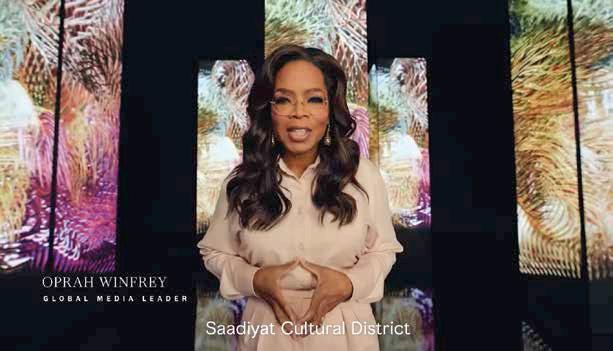

Muller & Phipps Middle East Group, a MENA-based technology distribution house, has acquired all the assets of Power League Gaming, a regional gaming and esports agency.
Power League Gaming’s core business verticals include gaming and esports strategy; the management of online and offline esports activations; the creation of branded and owned IP gaming content; educational content creation; hosting gaming events; social media marketing; and influencer marketing.
Commenting on the acquisition, Group CEO of Muller & Phipps Middle East Group Holdings, Trevor Price, said, “As part of The Getz Group of companies, we are rooted in seeking out new business verticals that we see huge growth potential in. The gaming and esports category is becoming a staple part of bluechip consumer brand marketing strategies across the world, and the space for us to establish ourselves as the lead partner for strategy and content in MENA is wide open.”
“With Power League Gaming we see market experts who have grown rapidly and who have the talent and drive to take the business and the category itself to the next level across our region. We are excited to launch into Saudi Arabia later this year and

to offer local clients the latest and most commercially sound esports and gaming strategies in the field,” Price added.
Muller & Phipps Middle East Group Holdings serves clients with omnichannel distribution solutions for tech partners and network carriers, technology solutions for hi-tech and medtech via its group company Pedigri Technologies and international sales and marketing via Getz Technology. The CEO of Power League Gaming, Matthew Pickering,


For Father’s Day this year, Canon launched a campaign celebrating the dads behind the lens who rarely get to be in the picture. The picture series showcases universal moments in children’s lives and hints at the often-hidden parent behind the scenes. Shot exclusively with Canon cameras, the campaign features six photographs that capture everyday yet significant moments in children’s lives, such as the first day of school, learning how to ride a bicycle or enjoying summer in the pool. The campaign was designed with the aim of resonating with Canon’s vast non-professional audience by showcasing the ease and intuitiveness that define the cameras’ range.
Saudi-based media company SMC has announced a partnership with gaming content and activations company Evolution Group to provide brands opportunities to advertise with in-game advertising in the GCC region.
The new agreement will allow SMC to sell ads that appear within games, opening a new and “highly engaging” channel to reach audiences. The in-app advertising solutions are designed to integrate brands into gaming environments in an immersive and nondisruptive format while engaging with players.
SMC also highlighted that it recognises the vast potential of this platform for advertisers.
said, “The rise of gaming and esports in the region in recent years has been nothing short of astronomical. With Covid playing a key role in attracting new users, these users are here to stay, and they are further fuelling growth. Saudi Arabia’s firm commitment to become a global hub in the category by 2030 makes the opportunity even greater. We are delighted to be working with our new partners and owners Muller & Phipps to become a key player in their vision for the region.”
“Gaming is a vibrant and growing sector globally and in our region and it is SMC’s aim to deliver innovation and quality services to our customers in this space,” said Khalid Alkhudair, CEO of SMC.
Warrick Billingham, General Manager at Evolution Group, also commented on the new ad service. “From day one, our goal has been to invest in the growth of the gaming sector in the region and bring forward innovative solutions, particularly to brand advertisers,” he said.


Inspired by the UAE, Toblesone’s limited edition packaging aims to act as a two-in-one pack – doubling as a wrapper and a poster. The triangular chocolate is one of the most easily identifiable chocolates, owing to its shape. Through the revamp, the brand aims to boost its visibility in travel retail and use its packaging as a storytelling medium. The chocolate’s packaging was redesigned by collaborating with UAE artists to bring a local touch. The patterns range from monochrome horses created from Arabic script to colourful renditions of falcons, a local woman and traditional elements of the country such as camels, ghazals and towers.
Agency You Experience

Abu Dhabi-based news outlet The National has revealed the initial iterations of its brand redesign across its digital and print platforms, including its desktop and mobile website, smartphone application, and print daily.
“We’ve been working hard to create a more user-friendly experience that better reflects our
brand and values,” said Wael Goma, tech lead at The National.
After months of behind-the-scenes work, the first versions of the brand’s redesigned website and rebuilt apps were rolled out over the past two weeks, with the new-look newspaper in print revealed over the mid-July weekend.


The beauty brand’s hero products were incorporated into a set of six video narratives, which explored women’s bonds, traditions and the role of beauty in their lives across different generations. The videos aimed to show how the brand’s products boost confidence and improve the users’ ‘glow’. The series features four inspirational women, who shared their personal stories with the brand first-hand. The brand used this method to build content that was more entertaining and engaging for the audience. According to the brand, the strength of the series came from placing the trust and power in the hands of the cast, who are each put in the spotlight and bravely detail their own story.
Agency Crater
Nick Donaldson, Creative Director at The National, said: “I’m really proud of what we’ve achieved in a relatively short space of time, trying to balance the evolution of our fledgling brand without losing the feel of who we are. We tried to keep the essence of The National while moving the paper closer to the website design rather than the other way round, a first for us.”
He added, ”We tried to achieve this by mirroring the classical, elegant feel we hopefully achieved on the website and app by retaining the webfriendly fonts necessary for online, with a bit of pushing and pulling for print. As well as the increased amount of white space, lighter touch and using the same new logo/masthead. There are echoes of one within the other.”
A leadership team consisting of The National’s Editor in Chief Mina AlOraibi, Head of Digital Strategy Alex Gubbay, Managing Editor Laura Koot, Head of Platforms Stephen Nelmes, and Creative Director Nick Donaldson led the rebrand.
The team responsible for the rollout of the brand redesign also included Deputy Creative Director Deepak Fernandez, designer Talib Jariwala, graphic designer Gerald Du, and product designer Ahmad Shoaib Hussain, among other product managers, developers, testers, and analytics experts.
Gubbay said, “There is lots still to do as ever, with more enhancements and significant iterations to come. But I’m so proud of everyone across our teams who pulled together to deliver this exciting step change across our digital products… and indeed a new-look newspaper too.”
PR consultant and Founder of Shakespeare Communications Ananda Shakespeare, a subscriber of The National for nearly a decade, said, “It’s always great to see a newspaper brand refreshing their design; it shows they care about the reader and keeping the brand contemporary. I think making the print more like the digital is an interesting approach – I did notice the difference in my morning paper. The white space around the masthead on the front page is quite pleasing.”


The celebratory campaign, which translates to ‘The Authentic’ was launched in honour of the quick service restaurant’s first anniversay in Saudi Arabia. It includes a signature song by rapper Bandar Yahya, who is the voice of the brand’s first anthem in Saudi Arabia. The direction of reelasing a rap anthem was inspired by the bold, self-confident, and original spirit of Generation Z. The Arabic track’s clever wordplay aimed to reflect the bold and original nature of Arby’s, drawing a comaprison between the restaurant’s and Gen Z’s youthful spirits. Apart from the music video and song, the campaign also included in-store displays, staff uniforms, branded giveaways, window stickers, and more.
Agency Kijamii




















The Middle East’s marketing landscape is undergoing a transformative shift towards outcome-based marketing. This strategic approach flips the traditional marketing script by prioritising tangible business results over vanity metrics. While the need to align marketing efforts with overarching business goals is undeniable, the reality of transitioning to outcome-based marketing in this dynamic region presents both exciting opportunities and significant challenges.
Outcome-based marketing redefines success by focusing on the customer’s desired outcomes. Instead of simply broadcasting messages, outcome-based marketing campaigns are laser-focused on driving specific actions that benefit both the customer and the business. This customer-centric approach, prioritising actions over impressions, offers a clearer path from marketing investment to
tangible business outcomes. This is gaining momentum, and I was proud to be part of multiple conversations at Cannes Lions this year, where the need for creativity in driving brand performance – both commercial and beyond – was a key theme. It’s getting louder by the year.
In the retail sector, the power of firstparty data is undeniable. By understanding spend patterns, customer lifetime value (CLTV), and even broader business performance across geographies, customer life stages, and nationalities, marketers can gain a granular view of their target audience. This enables a more personalised and effective approach to outcome-based marketing, tailoring campaigns to specific customer segments and optimising for maximum ROI.
First-party data also plays a crucial role in bridging the gap between online and
Landmark Group’s Mitin Chakraborty on how outcome-based marketing models pave the path to sustainable growth.

offline marketing efforts. By tracking in-store footfall and purchase behaviour alongside digital interactions, marketers can create a more holistic view of the customer journey. This allows for better attribution modelling and a more comprehensive understanding of how different marketing channels contribute to overall business outcomes.
In businesses like ours, where we often operate across a multitude of channels, the complexity of outcome-based marketing implementation intensifies. Accurately attributing outcomes to specific marketing efforts can be like navigating a labyrinth, especially when dealing with non-linear customer journeys. For example, a customer who sees an online ad, visits a store multiple times, and eventually purchases through a mobile app, or inconsistent data reporting across platforms. The region’s unique blend of online and offline consumer behaviour and nonstandardised attribution models further compound this challenge.
MEASUREMENT: THE KEY TO UNLOCKING OUTCOME-BASED MARKETING POTENTIAL
Data analytics is the backbone of outcome-based marketing, offering invaluable insights into customer behaviour and campaign effectiveness. However, it’s also where many businesses stumble. Varying agency methodologies and the inherent difficulty of tracking certain metrics can create inconsistencies. Additionally, the financial investment required for advanced analytics can be a barrier, particularly in current times of economic uncertainty and cost pressures.
While the long-term benefits of outcomebased marketing are significant –enhanced efficiency, optimised marketing spend, and deeper customer insights – the transition demands a pragmatic approach. It’s not a one-sizefits-all solution, but a framework that requires careful planning, resource allocation, and a willingness to adapt.
For businesses in the Middle East, outcome-based marketing certainly offers a promising path to sustainable growth. By embracing a customer-centric mindset, investing in robust data analytics, and collaborating across departments, marketers can truly demonstrate their strategic value and prove their impact on the bottom line.
By Mitin Chakraborty, Head of Marketing – Babyshop, Landmark Group
Quill Communications’ Tony E. Saade talks about the IQ model of futureproofed brand building, why simple is strong, and how to ensure strategy remains spot on while the cash register buzzes as well.






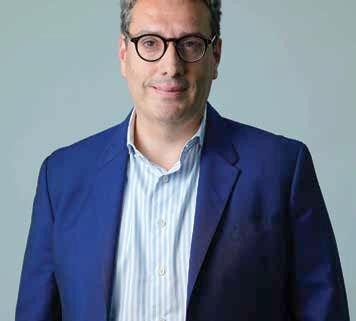
Creating a brand is a messy process. If you think you can wake up, make coffee, open your laptop, sit at your desk, and start writing a strategy, you’re mistaken.
I call it a structured mess, one that allows you to experience highs and lows to reach clarity.
Creating a brand is based on little connected bits of inspiration. These can come in many ways, at any time, and in any situation, even in the most awkward places.
I’ve developed many of my best strategies locked in a room staring at the ceiling or hiking at an altitude of 1,500 metres. I admit both situations are awkward; maybe that’s why they work.
Creating a brand is challenging. In a world full of photocopies, coming up with an original thought is incredibly difficult.
Creating a brand should be monetised. I don’t believe in “marketing in the dark.” If the cash register doesn’t buzz or there are no conversions, then it’s simply not working, no matter how spot-on we think the strategy is.
At Quill, we developed the IQ Model, which stands for Insights, Imagination, and Integration. Some of our clients worry we’re going to test their IQ, and we often have to explain.
The IQ model allows us to build future-proof brands. We believe that when you build a brand, you don’t build it just for now, but for the future.
Every brand needs to plant its flag by finding its purpose through unique positioning, storytelling, communication magnets, and consistency. All marketers will tell you this.
I’m not here to give you a lecture in communication. But if you’ve made it this far, that’s great news for me. So let me tell you what makes Quill different and how we apply our IQ model to every project, whether it’s a small piece of content or building a brand from scratch. And how our work resonates with clients in different markets.
It’s a perpetual shift in how we work.
We start with insights. We dig beneath the surface to uncover and unearth the unique truths about the brand, guided by curiosity. We don’t settle. If a piece of information is that easy to find, then everyone else will have their way to it. But once we find those insights, that hidden information, we question and challenge them.
We ask the how and why to arrive at the what. To reject sameness.
Our insights are the third eye that sees what lies beneath the mental iceberg, in the deepest valleys of a brand’s reason to exist.
Then we move to imagination. A world without imagination is a world without innovation.
We imagine by pushing the boundaries of our thinking, setting free our preconceived ideas, and jumping outside the frames. Great ideas aren’t created in a vacuum but outside comfort zones.
We imagine to produce original thinking, experiences, and work that make an impact. Remember the world of photocopies I mentioned?
We imagine the best way to tell the brand’s story.
Finally, we move to integration. Many claim it, we live it. It’s our daily mantra. We integrate to unlock unparalleled growth for our clients.
We integrate people, resources, experiences, tools, designs, and technologies to drive today’s next in a brand’s life.
We integrate for brands to wow, for products to innovate, for customers to engage.
We integrate so we can take your brand from the boardroom to the streets.
At a time and age where we are bombarded by communication messages, and brands struggle to decide who delivers better, an AI algorithm, or a human brain, we at Quill believe that simple is strong.
As Steve Jobs once said, “Simple can be harder than complex. You have to work hard to get your thinking clean to make it simple.”
Want to know more about Quill and our IQ model? Get in touch: tsaade@quillmena.com. P.S. I check my emails even during vacation days.
By Tony E. Saade, Chief Strategy Officer, Quill Communications

The way I enjoy working is avoiding theory and philosophy and, instead, being involved throughout the process: identifying the real problem –interrogating the obvious problem to find the problem beneath the problem.
Looking at all the research and data available. And using that to inform but getting off chairs and observing people and lives, uncovering untapped and untold truths that feel right. Building and defining a distinctive, meaningful role for brands and products. Giving all the teams a strategy that will drive growth. Making sure, by working conceptually with teams, that the solutions come to life across a data-driven journey and connections plan. And being involved in measuring it, to ensure it’s effective.
STRATEGY OFTEN PLAYS SECOND FIDDLE TO THE CREATIVE IDEA. WHY? AND SHOULD THIS THINKING BE OVERTURNED?
Correction: poor strategy and lack of rigour leads to strategists playing second fiddle to the creative idea. Strategists should not be plumbers who retrofit strategic ideas and make presentations to pre-sell the creative work.
Strategists should not be plumbers who retrofit strategic ideas, writes Publicis Groupe’s Tahaab Rais.
The rare breed. Yet, the first whose time is reduced in a scope. The least celebrated. Yet, the first ones needed when a brief comes in. Strategists are critical.
Yet, it’s been a while since journalists asked for interviews around strategy. So, we thought we’d make one up, with quite a few provocations about why strategy in agencies needs better strategy.
THE ROLE OF STRATEGISTS IS OFTEN MISUNDERSTOOD. WHAT DO YOU ACTUALLY DO?
Unfortunately, the role of strategists is frequently misunderstood. Strategists are not brief-writers; nor do they only package presentations. But not enough of our kin are actively contributing to the actual creative product produced or elevating the value of strategy to clients and agency folks.
How should this be overturned? Simply by stepping out of our closet and doing what strategists should be doing. Identifying a big problem that excites. Uncovering a truth and a strategic approach that makes people go ‘Aha, that’s interesting!’
And being involved throughout the creative process, partnering with creative and other departments, making sure the solution is well-connected, relevant to people and, importantly, effective.
Re-learning and re-educating oneself is crucial too. This entails an investment (both monetary and time) in keeping up with the constantly evolving world, by constantly absorbing knowledge and data through varied information resources, studying and mastering relevant AI tools, reading financial reports and annual reports of companies, and exploring as well as creating new ways to think and make.
SHOULD STRATEGISTS LEAD AGENCY PROCESSES?
An agency’s strategic methodology should become its process. It’s not enough having a beautifully crafted agency purpose for media articles or seminar talks. It’s about converting that purpose into an operating system where everyone works with it and contributes to it.
In such an environment, strategists must assume a role akin to the master conductor in an orchestra. On brands, strategists must
“STRATEGISTS MUST ASSUME A ROLE AKIN TO AN ORCHESTRA MASTER CONDUCTOR.”
aim to sync the people, the client and the agency’s own teams across disciplines. Upsell and cross-sell to clients.
For the agency, strategists must sync their own departments, the different disciplines and partner agencies.
The first leadership goal is for strategists to make sure everyone is in tune. The second leadership goal is to make sure everyone (agency and clients) is trained on it and embraces it.
DO AGENCIES HAVE A STRATEGY PROBLEM?
Yes. While we do have some really smart strategists, we need many more of them.
The trouble is that because there’s not enough understanding of what strategy entails, there’s not enough time scoped for strategists, and hence there aren’t enough quality strategists working as strategists should.
Most clients I’ve met value strategy. They enjoy conversations with strategists and respect the role of strategy.
But because most agencies don’t charge enough for strategy, strategy often becomes a cost centre as opposed to the profit centre that it should be, given the value of strategists.
The most important thing to change is the financial structure in most agencies. There’s a critical need for strategy leaders to sit the business and the finance teams down and take them through the strategic process, right from the get-go all the way to the execution and the evaluation, and help them understand the time that is needed and the value brought in.
And be involved in scoping so time is scoped accurately and comprehensively enough and clients pay for the time they want and demand from strategy.
In terms of the organisational structure across agencies, strategists should be sitting at the centre of it all, as the master conductors.
By Tahaab Rais, Chief Strategy Officer, Publicis Groupe ME&T


















ne thing I have learned in over 20 years in this fascinating industry is that long-term success must be built on a blueprint of consistently delivering solutions that genuinely resonate with both our clients, and their target audiences. Keeping the customer satisfied is a mantra that reminds us that our clients have customers who in turn have consumers, so we are a pivot point in a value chain that needs to maintain good working relationships across all touchpoints and thus retain repeat business. Treating each project as a one-off job will never give clients long-term satisfaction.

Viola Communications’ Ola El Sisi shares her insights on why an effective strategy for the future needs commitment, agility, and an open mind.






Successful brands understand that lasting connections are forged not just through individual attention-grabbing promotions, but by cultivating meaningful engagement that provides value to consumers. By deeply analysing an audience’s needs, preferences and behaviour, we can develop full-funnel marketing strategies that foster loyalty and drive sustainable growth.

The most impactful advertising, marketing, and media solutions are those that go beyond short-term sales figures, focusing instead on building authentic brand loyalty. This requires an agile, adaptable approach that is open to assessing the constantly shifting market dynamics while remaining committed to the core essence and values of the business.



At Viola, our strengths are augmented by a number of unique characteristics that enable us to devise effective marcomms solutions, from the inception of creative ideas through execution. For example, our business units cover the entire gamut of the value chain, and it’s all in house, resulting in outstanding agility to stay at the forefront of the industry.






“Impactful advertising, marketing, and media solutions are those that go beyond short-term sales figures.”


At the heart of our philosophy lies a commitment to diversity: of thinking, of creativity, and of people. We purposefully nurture our team of over 20 nationalities, each one of whom plays a significant role in our strategising for the future. We understand that our differences add more power, innovation, creativity, and versatility to every project we work on for our clients.
As a key market player, we are very aware that we play a crucial role in collaborating with our stakeholders to make positive contributions wherever and whenever possible. Through our CSR programme, “Viola with You”, we underscore our commitment to communityminded initiatives and pursuit of a sustainable future by focusing on building a strong team culture, ensuring positive social impact, raising awareness of the importance of sustainability, and promoting stakeholder inclusivity and engagement.



As I constantly emphasise, agility is key; and because we know that marketing is one of the most important investments a business can make to drive growth, for more than 20 years now, Viola Communications has been crafting agile strategies that deliver impressive results for long-term clients, while also constantly attracting new accounts and generating important new-business development opportunities. Having themed 2024 as the year of growth at Viola Communications, we are following our own blueprint for success, contributing to the growth of the industry through several strategic investments and building a more dynamic business environment within the Emirates.


This requires an open mind to all innovation – as a well-established powerhouse in the communications industry, Viola Communications


is known for implementing groundbreaking strategic projects and initiatives with various government and private sector entities in the UAE, focusing on high-tech tools and calculated partnerships that drive immediate scale and open new revenue streams.
And yes, we are driving digital transformation through one of our business units, Viola Outdoor, actively embracing digital evolution. Our recent introduction of several new digital out-of-home (DOOH) media platforms in Abu Dhabi characterises our commitment to staying ahead of the curve, utilising cutting-edge technological advancements resulting in first-of-their-kind digital solutions.




Our teams are skilled in driving immediate business success, resulting in long-term benefits brought about by our overall strategy for all the sectors in which we operate: developing ideas that are original, innovative and raise the bar, committed to flawless execution and attention to detail, and providing services and products that resonate with the audience and deliver impact.
At Viola, we strongly believe in the power of commitment, the benefit of agility and the need to keep an open mind. Our blueprint DNA is based on ‘giving more’, whether it is to our clients, our employees or the community at large, connecting through initiatives that are designed to inform, educate and elicit participation. We are proud that this ethos has always been central to our business model, emphasising how responsibility, accountability, integrity, competence, fairness, and transparency contribute to our success today and into the future.




The story begins with a nail-biting finish to regulation time in the England versus Slovakia Round of 16 knockout game at the UEFA Euro 2024, which witnessed 21-year-old Jude Bellingham pull one out of the top drawer to score a splendid overhead kick in the fifth minute of stoppage time to level the game at 1-1 and force overtime. While the room that I was in burst into hysterics, the ADHD version of me got distracted. Was that a Build Your Dream (BYD) logo I just noticed behind Bellingham? What was a Chinese electric vehicle (EV) giant doing advertising, sponsoring, and partnering with a football tournament held in Germany – where the automotive sector is the beating heart of its economy? Surely, this had to be a first. Turns out I was right.
The brand confirmed to me that it is not only the first Chinese carmaker to sponsor the Euros, but it is also the only automotive manufacturer to sponsor Europe’s top-flight football tournament.
STRATEGY BEHIND THE SPONSORSHIP
The journalist in me just had to find out. Sure enough, I got in touch with Hasan Nergiz, the managing director of Al-Futtaim Electric Mobility Company (AFEMC), which represents BYD in the UAE and Saudi Arabia.
When asked about the strategy behind the UEFA Euro 2024 sponsorship campaign, Nergiz said, “Football is one the world’s most popular sports, so Euro 2024 is the perfect platform to amplify the brand’s commitment to green mobility and clearly show to the world that it is ready to deliver this. Despite being the world’s number one selling NEVs and one of the biggest names in the electric mobility world, it is still a relatively new brand compared with legacy automakers.”
Nergiz added, “The appointment of the brand as the ‘Official E-Mobility Partner of UEFA Euro 2024’ announces its arrival as a serious green mobility player, and the partnership is a perfect match between the world’s No. 1 NEV maker and the world’s most-watched sport,” he said.
“NEV?” I asked, recalling my days in New York, where NEV referred to a

neighbourhood electric vehicle, a US category for battery electric vehicles that are usually built to have a top speed of 25 miles per hour.
It so happens that the same abbreviation (NEV) in China refers to new energy vehicles, a collective term used to designate cars that are fully or predominantly powered by electric energy, which include plug-in electric vehicles, battery electric vehicles (BEVs), plug-in hybrid electric vehicles (PHEVs), and fuel cell electric vehicles (FCEVs).
Nergiz added: “BYD has reinforced its category leadership and has showcased the latest advancements in NEVs, including fully electric and hybrid cars, to a very large audience in Europe and beyond, while supporting UEFA’s endeavour to promote a greener and more eco-friendly tournament.
“This partnership also allows the brand to connect with a diverse and passionate audience, adding more enthusiasm and excitement to a brand that’s still establishing its positioning as ‘Build Your Dreams’.”
How apt, I thought, recalling the room when Harry Kane headed in what turned out to be the winning goal in extra time against Slovakia.
BYD
That’s when it hit me. I had indeed seen the brand in Dubai before - on the way home from work - promoting its eco-friendly driving experience on a billboard.
When I asked Nergiz about the brand’s other marketing campaigns in the Middle East region, he said, “BYD only arrived in the UAE last year and launched into Saudi Arabia earlier this year.”
“AFEMC is the brand’s partner, and Al-Futtaim has been very active in supporting and sponsoring initiatives that encourage the development of e-mobility as a whole. For example, Al-Futtaim was the Strategic E-Mobility Partner of COP28 in December 2023.”
I looked into it. The brand had, indeed, delivered a fleet of electric vehicles for the COP28 event and had hosted several onground campaigns to raise public awareness and offer education on electric mobility, plug-in hybrids, and sustainability.
“Case in point is the interactive and engaging talks with mall audiences at Dubai Festival City Mall, where Virgin Radio’s Priti Malik and I conducted sessions to explain and answer the many questions that people had about electric mobility,” Nergiz added.
Additionally, AFEMC also sponsors EVLife. world, a new media platform that raises awareness about green mobility. This comprehensive approach clearly highlighted the brand’s dedication to promoting sustainable transportation solutions in the region.
Hasan Nergiz, MD of Al-Futtaim Electric Mobility Company, on the strategy behind BYD’s
By Anup Oommen
“BYD has partnered with several agencies to ensure the marketing efforts are impactful and resonate with the brand’s target audiences,” Nergiz told me.
In the UAE and KSA, AFEMC collaborates with a few agencies for the brand, including Arduina for advertising, social media, and creative/production, and PHD for media planning and buying.
“These partnerships enable us to leverage strong insights and expertise to craft compelling campaigns that drive
“IN KSA, LEADS GENERATED HAVE INCREASED BY 53 PER CENT WHILE BOOKINGS HAVE RISEN 28 PER CENT.”
in ads created and placed on the app through the duration of the tournament, as well as a media partnership with kooora.com and goalzz.com.
“Concrete examples of our successful projects with these agencies include high-profile advertising campaigns, strategic social media initiatives, and innovative media planning that have significantly boosted our brand visibility and customer engagement,” said Nergiz.
“How significantly?” I asked, hoping to peel the onion on the actual impact that the sponsorship campaign had on brand building efforts and sales. Nergiz’s response did not disappoint.
engagement and brand growth,” he added. “Additionally, along with the BYD Discovery Centre in Dubai Festival City, we are excited to announce the opening of several new showrooms soon, showcasing our commitment to expanding our presence and accessibility in the region.”
In the UAE and KSA, the brand has also adopted an integrated approach that encompasses a blend of online and offline channels to maximise reach and engagement.
Nergiz explained, “In addition to its showrooms, this includes digital advertising, social media campaigns, influencer partnerships, and content marketing, as well as traditional media such as TV, radio, and outdoor advertising. By creating a cohesive narrative across these platforms, it ensures a consistent and engaging brand experience for the brand’s audience.”
“As part of the UEFA Euro 2024 sponsorship, the brand also partnered with TikTok, to create a unique filter to promote the BYD SEAL car through the duration of the tournament. The filter offers users the opportunity to try and stop the clock at 3.8 seconds, which marks the 0-100 kmph acceleration of the car. This filter not only promotes the brand’s new electric vehicle but also taps into the massive popularity of TikTok and the football tournament,” he added.
The Chinese carmaker also collaborated with Snapchat in KSA, in terms of creative media, which resulted
He began with a detailed explanation of how the sponsorship of the UEFA Euro 2024 tournament significantly enhanced the company’s brand-building efforts and overall strategy by elevating brand visibility and reiterating BYD’s position as a leader in electric mobility and a supporter of sustainable initiatives.
“We know that there is already a strong affinity among our target audiences for the brand. Even in a new and emerging EV market like Saudi Arabia, where we have just launched a few months ago, we have already clocked over 1.14 million web visits – demonstrating the clear interest from customers and how the region is ready to embrace the green mobility evolution,” Nergiz said.
“All our Euro 2024 activities and communication campaigns have definitely caught the attention of the region’s customers. For example, in Saudi Arabia, we have seen an increase in web traffic by a whopping 66 per cent and a rise in engagement by 1,900 per cent in June 2024, compared with May 2024’s digital performance,” he added. “In the UAE, the brand’s campaign has also witnessed record engagements, with video views up 714 per cent, and impressions up 71 per cent.”
BYD shared that in the UAE, leads and enquiries were up 4 per cent and bookings were up 5.7 per cent. In KSA, leads generated have increased by 53 per cent while bookings have risen 28 per cent.
“These numbers give a good indication of the positive brand recall and a higher than anticipated return on investment,” Nergiz explained. “Even before the tournament,

BYD had become a very popular marque in the UAE, with more than 1,000 sales of cars since the launch last year. This is a great starting point, clearly showing a strong appetite and demand within the region for greener mobility alternatives.”
According to a study by online marketplace Dubizzle, where the region’s largest automotive community resides, there has been an eight-times increase in page views for Chinese car brands in the last four years, while the overall automotive traffic remains at a steady level.

“This year, the brand expects to sell even more in the region and achieve its global target to sell more than 4 million NEVs, surpassing last year’s sales of nearly 3 million,” Nergiz said.
BYD’s future plans in the Middle East region include expanding the product portfolio, bringing in new models and variants and increasing presence in key markets.
“We will also continue to ensure that the brand supports initiatives that promote sustainability and innovation,” Nergiz added.

According to Astute Analytica’s latest research, the EV market in the UAE is witnessing unprecedented growth. Valued at $2,969.72 million in 2023, it is projected to soar to $82,218.83 million by 2032, reflecting a compound annual growth rate (CAGR) of 45.84 per cent from 2024 to 2032.
“We remain extremely optimistic about our growth, especially as the region’s key stakeholders have identified electrification as the main pillar for sustainable growth and developing benchmark green economies,” Nergiz concluded.
NEW: Brand Experience Agency
Creative Agency
Digital Agency
Events, Experiential and Engagement Agency
Independent Agency of the Year
NEW: Independent Creative Agency of the Year
NEW: Independent Media Agency of the Year
NEW: Independent PR Agency of the Year
Influencer Marketing Agency
Integrated Marketing Agency
Media Agency
Performance Marketing Agency
PR /Communications Agency
Production House of the Year
Social Media Agency of the Year
Start Up Agency
Best Agency – Egypt
Best Agency – Iraq
Best Agency – Jordan
Best Agency – Lebanon
Best Agency – Oman
Best Agency – Qatar
Best Agency – Saudi Arabia
Best Agency – UAE
Account Person
Agency/Producer or Team
Arabic Copywriter of the Year
NEW: Best Place to Work
Corporate Comms & Marketing Team or Individual
Creative Leader
Creative Team
Head of Agency
Influencer Management Team
Investments /Trading /Media Buyer of the Year & Team of the Year
Outstanding Woman in Advertising
Strategy Leader
Strategic Planner & Strategic Planning Team of the Year
New Business Development Person of the Year & Team of the Year
Talent Management Individual & Team



By Stephan Davies, General Manager, Customer Experience and Network Development, Al Masaood Automobiles
At Al Masaood Automobiles, customer-centricity is not a catchphrase. It is a philosophy deeply ingrained in the culture. One that has allowed the company to achieve notable successes in service excellence and enabled it to ‘be one with the customer’, understand their needs and wants, and what they value – making their experience memorable, meaningful, and measurable.
Central to the company’s goal of providing the best possible quality of service to customers is a commitment to the people, process, systems and technology, and culture that bring this vision to life.
Placing customer-centricity as a main pillar in its strategy, Al Masaood Automobiles has invested substantial efforts in creating a strong, shared, sustainable, and centric culture that delivers service excellence.
The company adopts and promotes a customer-first mindset, prioritising transparency and fairness in all interactions – all driven by actively listening to customers, and thereby personalising service.
BUT HOW HAS AL MASAOOD AUTOMOBILES TRANSFORMED ITS CENTRICITY MINDSET?
We start with our most important resource – people: All members of Al Masaood Automobiles – from service advisors to sales representatives and operational staff – undergo comprehensive training programmes aimed at enhancing customer interactions and service quality. These programmes are purposely designed to ensure every customer journey is guided by expertise and a genuine desire to exceed expectations. Our training even includes neurosciencebased sessions on emotional intelligence and service excellence, cultivating a unified service language throughout the company. By equipping the team with the skills to understand and value each customer’s uniqueness, we ensure effective communication and collaboration across all departments. Through consistent messaging and empowerment, we have created clearly defined levels of service, and understand what is valuable to our customers, so we can take actions that create value for them.
Al Masaood Automobiles adopts a proactive approach by taking ownership of customer experiences and leveraging feedback from our AI-enabled Voice of the Customer (VoC) programmes and best-in-class tools. These allow us to identify friction points in the customer journey and use captured insights to strengthen emotional connections and drive innovation.
Providing access to real-time customer feedback to all employees has also been key to empowering them with ownership and responsibility for customer interactions. Ultimately, this has developed them into experts who genuinely care and prioritise the best interests of our customers. We also found that partnering with businesses that adapt their technologies to align with our strategy and goals is crucial to our success.
Digital enhancement:
In this day and age, digital presence is as crucial as the physical. To help us address challenges and seize opportunities in the automotive market, we have implemented the Customer Data Experience Platform (CDXP).
This platform is designed to streamline customer data management, thus allowing us to leverage that data to transform our marketing initiatives to customer-centric and data-driven ones that improve customer engagement and drive growth. The CDXP connects in realtime to all our customer digital touchpoints. These include our mobile app, website, digital engagement platform, CRM system, social channels, and VoC, thereby creating a unified 360-degree view of each customer.
Year-on-year, we’ve seen a significant increase in digital interactions, with an average of 22 per cent growth in our inbound interactions coming through digital or social channels. One of the key benefits of the CDXP is that it allows us to segment these interactions based on customer behaviour, preferences, and needs.
Using advanced analytics, we now identify patterns and trends in the customer data and create tailored offers and campaigns for each segment. By sending relevant and timely messages to these customers, we better serve them through a more personalised approach, and in turn increase conversions, retention, and customer lifetime value.
Over the past four years, our Net Promoter Score (NPS) has shown impressive growth: a 71 per cent increase in service, nearly 16 per cent in sales, and over 22 per cent in our parts business.
In our service department, we now engage with almost 50 per cent of our customers post-transaction, enriching our insights to eliminate friction points in the customer journey, and allowing us to elevate customer satisfaction. In sales, an impressive 70 per cent of our customers share their feedback, insights, and actionable information with us. These efforts have not gone unnoticed. Al Masaood Automobiles has received global recognition from our principal brands, including winning the Global Nissan Aftersales Awards three years in a row, the inaugural INFINITI Global Award, the Nissan Excellence Award, and many others.
This is a journey. Our culture of continuous improvement is a fundamental pillar in our quest for service excellence.


Are strategies in the Middle East moving more towards outcome-based models?

Faisal Mohammad
Naim Senior Strategist and Content Expert, Entourage
YESWith the advent of big data analytics, the creative industry is becoming more data-driven. As emphasis grows on ROI and measurable results, strategies in the region are shifting towards outcome-based models. Considering the modern highly competitive market and ever-evolving consumer behaviour, businesses are prioritising performance metrics and KPIs for better-informed decisions, to ensure their investments translate into tangible outcomes. Digital marketing campaigns are now more focused on engagement rates, conversions, and customer retention rather than mere reach. The transition is greatly working to foster accountability and innovation, while aligning marketing efforts with broader business objectives, ensuring sustained growth and success.
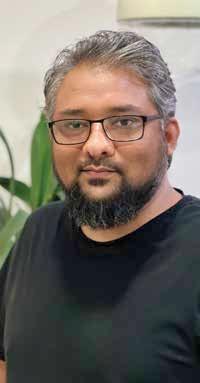
Roxanne Gahol Senior Director – Strategy, OMD
YESRegional strategies are moving towards outcomebased models. With the shift towards digital channels within the marketing mix, clients increasingly expect solutions that deliver tangible value and revenue growth. Marketers focusing more on lower-funnel media encourage agencies to embrace a level of risk by guaranteeing outcomes based on committed benchmarks. While doing that, marketers should not lose sight of building the brand and should maintain a balanced approach. Agencies that manage this risk with their client partners are ultimately rewarded with long-standing, mutually beneficial partnerships. This approach aligns marketing efforts with business goals, fostering trust and long-term collaboration between clients and agencies.


Senior Director - Marketing Science, Hearts & Science
Strategies in our region are moving towards an outcome-asa-service operating model that gets both brand and media working towards a singular growth objective. Limiting the value of media to delivering short-term incremental spikes in profitability adversely affects long-term, sustainable growth, a reality that brands are beginning to realise. The conversation is shifting from measuring incremental media output to defining outcomes linked to brand strategies that drive business growth through the right use of media. This also provides a broader canvas for brands to understand and measure the true potential of traditional offline channels, which helps them establish product differentiation for long-term, sustained growth.

James Jarrett
Senior Strategy and Partnerships Director, Assembly MENA
Marketing strategies are increasingly outcome-based, thanks to advancements in performance tracking and attribution models. Today, there is a stronger focus on measurable results and return on investment, driven by data analytics and digital marketing. This allows marketers to track and optimise campaigns in real-time. The emphasis has shifted to specific goals like new customer acquisition, ROI, and customer lifetime value, rather than traditional metrics like reach, impressions and clicks.
Sary Richat Regional Strategy Director, Mindshare MENA
Brands are demanding more tangible and measurable results for their marketing investment – website traffic, leads, and sales conversions – eclipsing the allure of vanity metrics like impressions.
The evolution towards outcome-based marketing is not just a trend but a testament to the power of a digitally savvy population. Their measurability of digital campaigns and the rise of programmatic advertising, which enables highly targeted and optimised strategies, are the driving forces behind this shift.
However, adoption varies across markets and sectors, with data availability playing a pivotal role. In the interim, a hybrid model blending traditional and outcome-based approaches is expected to persist.

John Tippins
Regional Strategy Director, UM MENAT
There is a mutually reinforcing relationship between accountability and automation, driving a noticeable shift towards outcome-based models in this region over the last couple of years. This trend is buoyed by the increasing investment in digital channels and the adoption of advanced data analytics and AI.
Accountability: Clients are expecting more transparent, metrics-driven campaigns that directly link marketing spend to business outcomes. Agencies are responding with performance-based solutions that have ROI at their heart.
Automation: AI-driven tools are enhancing efficiency and effectiveness in real time. This automation necessitates an even greater focus on dynamic results and their impact on desired outcomes.

Munther Al Sheyyab
Head of Planning and Strategy, Horizon FCB
All communication strategies are outcome-based to a certain extent. I believe a clear distinction should be made between being “outcomebased” and being “outcomeobsessed”. The latter seems to be gaining more prominence recently, which may not necessarily be a good thing.
While results are important, the irony lies in the fact that being too obsessed with outcomes can hinder achieving great results. I often ponder about “Dumb Ways to Die,” which has won five Grands Prix awards and is widely regarded as one of the most successful campaigns ever. Would it have survived the scrutiny of an outcome-obsessed team?

Strategy is inherently about calibrating the levers we can control to compel customers to act or think about our product, service, or brand a certain way. In this way, strategy at its heart should be humancentred, and it should spur a concurrent customer experience.
Can someone please explain that to my bank.
Recently, I had a problem with my bank account that remains unresolved. Though my relationship manager has since apologised, citing ‘back office’ issues, I find two issues problematic with this response:
First, had the bank used the plentiful data they have about me, I shouldn’t have had the issue to begin with.
Second, when a problem arises in the back office, rather than just accept the status quo, companies should use it as an opportunity to identify a leverage point in the system and put in place a process to rectify it so that it doesn’t happen to the next customer.
Instead, my credit card has been blocked for five days, meaning that all my automated payments are frozen and there are various other ramifications. Firstworld problems, I know, but an inconvenience, nevertheless.
The race to become omnichannel in our communications is meaningless if our internal processes and systems don’t speak to each other. The imperative to be ‘data-driven’ isn’t an end goal because being customer-focused is not just about collecting data to sell more stuff.
Rather, it is about fundamental behaviours, structures, and mindsets that put people at the heart of everything a business does. So how should an organisation go about this?
If we are serious about designing better customer experiences, we should begin by asking questions that help us understand what’s working and what’s not.
What are the most common daily frustrations our customers have? What motivates our customers and drives their decisions? How do we know our new website design is user-friendly?
We live in a world where customers no longer compare their experiences within categories but across categories. We expect outstanding customer service from our rental car company just as we do from our hotel reception.
At the same time, we value our privacy. In the words of former Greek Finance Minister Dr Yanis Varoufakis, people don’t want to become “machine food,” and we don’t want to be bombarded with emails every other day from our technology company.
Understanding what type of experience our customers expect is important to help us frame our challenge.
Asking our customers the right questions and analysing metrics allows us to identify areas for improvement and
modifications, ensuring our service aligns more effectively with customer expectations.
Economists like Adam Tooze have identified that we’re living in a period of interwoven and overlapping challenges – environmental, political, economic, and geopolitical. Added to this are technological acceleration and algorithms that take advantage of our innate human weaknesses.
It has become clear that the way to build a bright future for humanity is by developing a new definition of value that focuses on regeneration rather than exploitation. For customer experience, this means designing customer exchanges that are at the service of more fulfilling or useful interactions with our organisation or product. This could look like enhancing the onboarding experience for users or cutting down the wait time for repeat customer prescriptions.
One of the biggest challenges faced by any organisation today is how to turn information into knowledge. Whilst investing in a customer engagement and experience stack is essential, what matters
more is how we use that technology. AI is a powerful tool that can help organise and visualise a deluge of data that we can then turn into actionable plans, but the ability to develop powerful narratives from our data, and the creativity and experience to deliver those stories as catalysts for actions, outcomes and connections is more important than ever.
When I think about customer experience, I think about it in its broad brand sense, which is how customers interact with and perceive a brand.
The latter includes the full customer journey, customer contact points, and customer insight and feedback. In this way, customer experience is not only the domain of a department, but it becomes part of the whole company’s scorecard.
From this viewpoint, customer experience can become the competitive strategy, rather than a component of it, or a focus of one department.
We have more tools than ever at our disposal to do this, but we also need to foster the right human-centred behaviour and mindset to allow us to be at the service of humanity.
By Brenda Kassir, Strategy Director at Cheil

IF IT’S NOT HUMAN, IT’S NOT STRATEGY
Cheil’s Brenda Kassir explains why we need to start asking customers the right questions to improve their experience.
Havas Middle East’s Alejandro Fischer talks about why brands must go beyond simply keeping pace with change, calling for nuanced campaigns that resonate beyond fleeting fads and transitory trends.
In today’s fast-paced marketing world, the mantra is that brands must keep up with the rapid pace of cultural changes or risk becoming irrelevant.
While we all tend to agree on this as a core tenet of the work we do, it’s crucial to recognise the inherent risks in this pursuit. Sometimes, moving at the speed of culture implies moving at the speed of change, focusing on the biggest shifts.
But culture is not monolithic. It’s as much about what endures as it is about what transforms. Moving at the speed of culture doesn’t always mean moving at the fastest speed. Ignoring the nuances and complexities of cultural creation can lead to campaigns that feel shallow and inauthentic.
The same goes for dismissing behaviours we feel are outdated because they occupy less space in the zeitgeist, yet still represent a disproportionate part of what people do day in and day out (particularly in the world of media).
There’s also the danger that when brands chase new cultural trends too closely, creativity can be stifled. When the fear of missing out on the hot trend becomes a cult of the moment, everyone starts to look and feel the same, leading to, using the old cliché, a sea of sameness that fails to truly resonate with audiences.
To truly resonate in the Middle East, brands must move beyond simply keeping pace with change. They must authentically champion cultural movements aligned with their core values, understanding the nuances that make this region so unique.
We cannot ignore that the Middle East is a region undergoing rapid transformation, and it’s exciting, from mega-projects and gender
equality advancements to a flourishing local creative scene.
However, change isn’t always seamless. It’s essential to be empathetic to the cultural ripples these changes create. The feelings of needing to anchor tradition or reclaim the past are valid and reflect a desire to maintain a strong sense of identity. This isn’t about choosing between modernity and tradition; it’s about appreciating the complexity between the two and making it work.
This complexity presents unique challenges for advertisers. A homegrown brand’s message might resonate as genuine, a legacy brand might seem out of touch, and a global powerhouse might struggle to find its footing.
So, how can strategy help navigate these complexities?
UNDERSTAND THE REAL CONSUMER
Syndicated data is valuable, but it can’t capture the nuances of individual experiences. Invest in qualitative research, ethnographic studies, and real conversations to understand the true needs and desires of your audience.
Listening is a superpower. Winning brands listen to their customers and turn that discourse into action at scale. Forward-looking brands turn to their audience for the brief, creating campaigns that reflect real consumer insights and needs.
“THE FRICTIONS THAT CULTURAL CHANGE CREATES ARE FERTILE TERRITORY FOR BRANDS TO EXPLORE.”
Advertising is a team sport. Assemble teams with diverse perspectives and complementary skills to ensure layered views that create campaigns that resonate on multiple levels.
Sometimes traditional behaviours manifest through modern channels (e.g. education, not entertainment, tops the podcast charts in the Middle East). Other times, generational views around cultural changes overlap.
Gaming is becoming a strategic priority in the region; adoption and infrastructure growth are tremendous, but there is still a generation that doesn’t see this as a viable career path for its kids. These different realities coexist every day,

highlighting the importance of understanding the nuances within a single cultural shift.
The region we serve is vast, covering everything from sprawling modern urban areas to rural regions with different lifestyles. It’s natural that this diversity affects everything from retail preferences to fashion choices.
For example, abayas have evolved to become fashion statements in Saudi urban centres, while in more conservative areas, they maintain their traditional significance. One size does not fit all, and it’s important to remember that the speed of change is not constant everywhere.
Being mindful of these differences can make our strategies more inclusive and effective.
MOVE
Don’t just reflect change; drive it. Create initiatives that benefit the communities you serve and address real social issues. Empower audiences via product innovations that adapt to their changing lives rather than just reflecting them or celebrating them.
The frictions that cultural change creates are fertile territory for brands to explore. These tensions create unique blends of spaces and territories that can help us break through.
The more caught up we are with modernity, the more we yearn for simpler times. The more advanced our cities become, the more we seek escape to nature. The more global our world, the deeper the search for authenticity becomes.
Moving at the speed of culture is not just about keeping up; it’s about leading with empathy and authenticity. Brands that do this effectively will build meaningful, long-lasting connections in a region that’s rich in diversity and complexity.
By Alejandro Fischer the SVP of Strategy and Product Innovation at Havas Middle East
We all know that social media is a powerful tool for businesses to connect with potential customers. But merely existing on social media without a solid strategy is like a person without a personality: unremarkable and easily overlooked. A good social media strategy keeps brands in front of their audience.
However, simply posting is not enough; brands must actively engage and show up on social media. Here’s how they can do it:
A brand’s purpose is the fundamental reason it operates, highlighting its commitment to making a positive impact on society or the environment.
On social media, brands can showcase this purpose through consistent, purpose-driven content. Whether it’s sharing stories of social initiatives, promoting sustainability practices, or highlighting community involvement, brands can effectively communicate their values. This transparency and dedication to a greater cause is greatly appreciated by Gen Z audiences and differentiates the brand in a crowded digital space.
According to Hootsuite’s 2024 Social Media Consumer Report, a generational shift is emerging in how receptive people are to brands participating in sensitive cultural discussions. Younger generations
“SIMPLY BEING PRESENT ISN’T ENOUGH; BRANDS NEED CONTENT THAT IS PURPOSEFUL AND BUILDS TRUST.”

are increasingly tolerant of brands engaging with topics like politics and gender equity.
Showing purpose can involve partnering with local charities or running campaigns that give back to the community. This kind of engagement fosters a sense of belonging and makes customers feel that by supporting the brand they are also supporting a greater cause.
Creating purposeful content not only enhances engagement and builds trust but also increases the likelihood of followers sharing the content, thereby boosting visibility. Shared posts have been shown to prompt consideration behaviours in 82 per cent of people at least once in the last year (Social Media Consumer Report). Content that resonates enough for people to share with their family and friends serves as a powerful form of social proof, influencing others’ perceptions positively.
When users share content from a brand, it acts as a personal endorsement, which can be more influential than traditional advertising. For instance, a heartfelt story about how a brand is making a difference in the community can go viral, reaching a wider audience than the brand could achieve on its own. This organic reach amplifies the brand’s message and builds credibility.
Additionally, encouraging usergenerated content (UGC) is another effective way to show up. By inviting customers to share their own experiences with the brand, businesses can create a vibrant community of advocates. UGC is often perceived as more authentic and trustworthy, further strengthening the brand’s reputation and appeal.
Maintaining a consistent presence on social media while avoiding the pitfall of spamming customers requires a delicate balance.
Brands must focus on meaningful interactions that add value to their audience’s experience. This can be achieved by actively listening and responding to followers, personalising communication, and engaging with potential customers in a clever way.
Consistency doesn’t mean posting every day at the same time; it means maintaining a steady rhythm of content that aligns with the brand’s voice and values. This keeps the audience engaged and reinforces the brand’s identity.
Brands should leverage social media analytics to understand what types of content resonate most with their audience. This way, businesses can refine their strategies to ensure they are consistently delivering content that their followers find valuable.
To stand out in the digital realm, brands must embrace innovative technologies
Hashtag’s Reine Jalloul explains the need for brands to ‘show up’ and engage with people in a clever way.
such as mixed reality and augmented reality (AR). Being innovative allows brands to continually evolve and stay relevant in the eyes of their audience, helping nurture and grow followers.
Innovation technologies offer immersive and engaging ways for brands to connect with their audience. For instance, a beauty brand might use AR to allow users to virtually try on makeup, providing a fun and interactive shopping experience.
Innovation doesn’t always have to be high-tech. Creative campaign ideas, unique collaborations, and fresh approaches to storytelling can also set a brand apart. The key is to keep experimenting and adapting to new trends, ensuring the brand remains relevant.
It’s crucial for brands to actively engage on social media with a clear strategy. Simply being present isn’t enough; brands need content that is purposeful, engaging, and builds trust, encouraging followers to share it with others.
Consistency in posting helps maintain meaningful interactions without overwhelming the audience. Innovation keeps brands relevant and appealing to followers. By showing up on social media, brands can foster enduring relationships, positioning themselves for sustained growth and influence in the dynamic digital world.
By Reine Jalloul, Creative Strategist at Hashtag.
Visa’s CMO in the region Tarek Abdalla talks about the importance of translating jargon into impact and establishing a clear rationale for how programmes are measured.
Marketers constantly navigate a complex landscape of expectations and change, both internal and external.
While continuing to deliver value at increasing levels of efficiency, we are also called upon to make sense of the impact of external factors – technological, economic, societal, and structural – on consumer behaviour. In justifying one of the largest spend items on the profit-and-loss sheet, we strive to demonstrate that marketing is an investment not a cost.
It is in the intersection of these expectations that we often fall short. While we are primarily audience and communication experts, we too often fail our most important internal audience by choosing to speak the language of the marketing industry, tech platforms and evangelists: engagement! views! virality! ride the trend!
It is a language that has always been irrelevant in the boardroom and, while all of these measures are important in
Build first-party data: This data can be used to test the relationship between a typical marketing metric (growing purchase intent) and actual behaviour that matters on a scorecard (revenue).
Do CRM right: Done correctly, customer relationship management (CRM) can establish behavioural links, segment consumers and deliver highly optimised results-oriented marketing. If someone bought a baby crib from your furniture business, its likely they will need a bigger bed in a few years, and building a direct link between a highly targeted marketing campaign and specific business outcomes is easier.
Own measurement and results: Aligning measurement with the C-suite is the biggest favour you can do for your organisation. Communicating failure and learnings will increase credibility. Your CFO already knows that a subset of your marketing activity is not effective. You’re better off measuring it and having an open discussion about what you’re doing differently.
our own minds, I have never seen them move the needle on investment and our long-term credibility.
ABANDON THE JARGON
The allure of clever marketing jargon can be intoxicating. It fosters a sense of insider knowledge, a secret language understood only by the chosen few tasked with making sense of technology shifts.
But in the boardroom, this esotericism falls flat. Boardrooms run businesses and businesses ultimately care about revenue, profit, or ideally both. While we fixate on tech jargon, we often neglect to demonstrate how it affects customer acquisition cost, conversion or, most importantly, revenue and profit. We sound impressive but, over time, we inadvertently undermine our value proposition.
Too many marketing functions are focused on delivering ‘marketing’ without understanding where the business’s pain points are and how we can help.
We must invest time to understand these pain points, and how progress is recognised on the company’s scorecard. Is our product category declining? Is private label deflating margins? Is the cost of conversion rising faster than new customer acquisition? Are alternatives to our product emerging?
But the real gamechanger is being clear on what customer-attitude or behaviour marketing can change (and measure) in a way that will have a meaningful impact on these challenges.
If you establish correlation between marketing outcomes and business outcomes, then focusing the organisation behind that change will reposition the function’s role in the boardroom.
If telling consumers about your site’s 30-day return policy increases purchase intent, and every 10 per cent increase in purchase intent drives a 1 per cent increase in conversion, it becomes easier to justify a top-of-funnel investment for a company that measures conversion rates on its scorecard.
Once we understand the business challenge, and what consumer behaviour we need to change, the next task is aligning our goals with the scorecard. This task has become

easier for digitally native or business-toconsumer (B2C) businesses where marketing can see and influence the entire value chain.
But if you sell a product to a distributor who sells it on to a retailer and then a consumer, establishing a link to the scorecard is a more complex game.
Regardless of business model, technology has made establishing marketing’s impact easier, and the answer is always data and measurement.
As we translate jargon into impact and establish clear links between marketing outcomes and scorecard measures, we also need to do what we do best, which is tell a compelling story. We need to focus on the ‘why’ before the ‘what’, establishing a clear rationale for our programmes, how we will measure them and how we are helping the business.
The boardroom cares about growth, revenue and profit. We bring so much to the table if we see ourselves as partners in these goals. We owe it to our companies, our teams and ourselves to position marketing as a strategic partner in growth, not the folks who print the pretty t-shirts.
By Tarek Abdalla, Senior Vice President and CMO
O F T H E R E G I O N
This year’s Cannes saw UAE and KSA agencies pick up 22 Lions and a Grand Prix across a total of 15 campaigns. Regional brands, who worked with global agencies, also picked up their own Lions. Here’s a compilation of all the MENA winners.
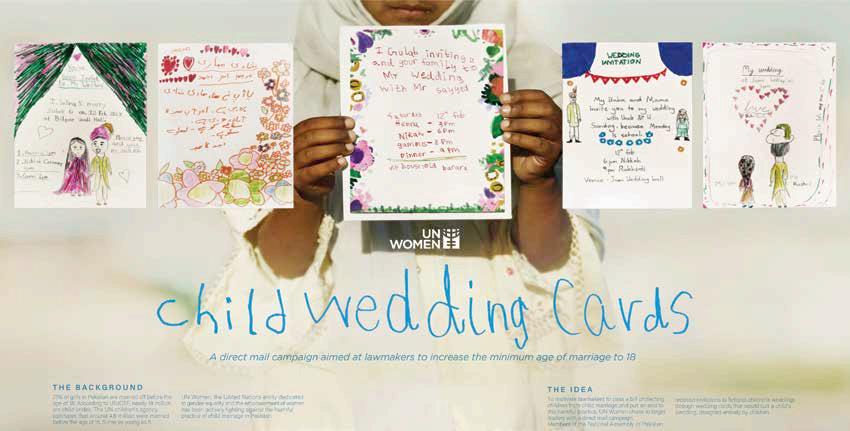

Client: UN Women
Agency: Impact BBDO, Dubai Lions: Lions Health Grand Prix for Good; Gold (PR); Bronze (Glass: The Lion For Change)
The judges said: “What really hit home for me is that the Grand Prix winner has no special effects, no celebrities, no fancy AI; just a really simple inexpensive idea and a classic example of the right message to the right audience at the right time.”
David Ohana, Chief Communications and Marketing Officer at the United Nations Foundation and Lions Health Grand Prix for Good Jury President





Client: Kinokuniya
Agency: Saatchi & Saatchi ME, Dubai
Lions: Silver (Industry Craft)




Client: Floward MENA
Agencies: Floward/Impact BBDO
Production house: Good People Films
Lions: Silver (Film)



Client: Annahar Newspaper
Agency: Impact BBDO, Dubai
Lions: Silver (Print and Publishing); Bronze (PR)


Client: Testicular Cancer Society
Agency: FP7 McCann, Dubai
Lions: Silver (Brand Experience and Activation)
Client: DP World
Agencies: Edelman, London
Lions: 2 Gold (Titanium, Sustainable Development Goals); Silver (Creative B2B)


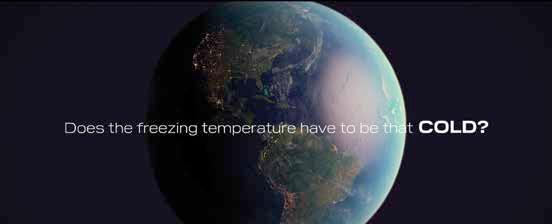









Client: McDonald’s Agency: FP7 McCann, Dubai Lions: 3 Bronze (Direct, Media, Creative Commerce)
BMW IJACK
Client: BMW Agency: Serviceplan Middle East, Dubai Lions: Bronze (Media)
HEINZ KETCHUP INSURANCE
Client: Heinz Agency: FP7 McCann, Dubai Lions: Bronze (Radio and Audio)
SELFLESS SHELVES
Client: Arla Agency: FP7 McCann, Dubai Lions: Bronze (Creative Commerce)
MIS[S]DIAGNOSED
Client: Al-Futtaim IKEA Agencies: INGO, Hamburg Lions: Bronze (Outdoor)



Client: Organon Agency: Mullenlowe MENA, Dubai Lions: Bronze (Pharma)
TABOO TOTES
Client: Nana Agency: Saatchi & Saatchi ME Lions: Bronze (Social and Influencer)
ZAEL – THE DISAPPEARING FONT
Client: Protype Studio Agency: Leo Burne , Dubai Lions: Bronze (Industry Craft)
TRY GALAXY FOLD EXPERIENCE
Client: Samsung Electronics Agencies: Cheil Worldwide, Seoul/ Cheil Worldwide, Dubai Lions: Bronze (Direct)
A round-up of the best campaigns around the globe that were awarded at the Festival of Creativity.
This year’s winners had their fair share of creativity, supplemented with a healthy dose of AI, showing how the industry is moving to a more tech-focused approach. This is a sentiment echoed by the festival itself when it dropped its Mobile category, due to the omnipresence of the device across all campaigns.
But as indicated by the winner of the category that replaced it – the Luxury Lion – not everything is AI. The Loewe x Suna Fujita collaboration brought handcrafted ceramics to life in a stop-motion video. While some campaigns, including ‘Adoptable. By Pedigree’, ‘Voice 2
Diabetes’ and ‘Magnetic Stories’ leaned into AI, their reason for success is still coded in humanity.
Nothing brings the human element quicker into a campaign than working with actual humans – celebrities – as seen in ‘Michael CeraVe’ and ‘The Misheard Version’. The two campaigns also bring in the talk of the town this year – humour. The success of this can be seen through the Titanium Lions Grand Prix winner: DoorDash All-The-Ads.
Read through for more on all the Grand Prix winners.


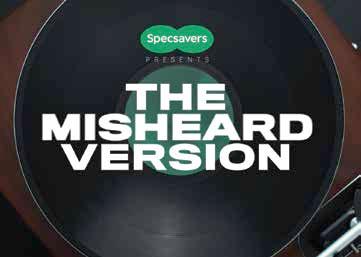
Specsavers “The Misheard Version” by Golin London
The campaign saw Specsavers conduct a mass hearing test using a special song. The brand partnered with Rick Astley to re-record ‘Never Gonna Give You Up’ with lyrics the public has misheard for years including phrases such as “Then I’m going to run around with dessert spoons”. The work was commended by the jury both for its creativity and “reckless ambition”. Built on the basis that people are often reluctant to get a hearing test because ‘it makes them feel old’, the test was used to urge people to get checked and make hearing loss less scary.
BRAND EXPERIENCE AND ACTIVATION LION


Pop Tarts “The First Edible
by
This campaign featured Pop Tarts entering the world of US college football brand sponsorships, which are dominated by generic mascots, before introducing an edible mascot to “die for sponsorships’ sins”. The brand then sacrificed its mascot to the winning team, with the victors enjoying the edible mascot as a postgame snack.


CREATIVE BUSINESS TRANSFORMATION LION


Phillips “Refurb” by LePub Amsterdam
This work showed that after the Christmas period is over, more than 10 million returned gifts end up in landfill. Phillips promoted returned products as an exclusive range to raise awareness for the hidden issue of e-waste. Phillips only sold refurbished products till they were sold out during the last festive season. Some 52,000 refurbed gifts were sold and about 185 tonnes of waste were avoided.



CREATIVE DATA LION CREATIVE B2B LION

JCDecaux “Meet Mariana Prieto” by David Madrid
Brands consider subway media to be not as relevant, effective, or attractive as regular street OOH advertising, despite the number of people commuting daily. JCDecaux wanted to make a campaign to convince brands that this media truly works and to make them reinvest in it again. To prove the power of out-of-home, it turned a 100-year-old grandma into an Instagram hero – using un-booked media spaces to spotlight her posts.



The

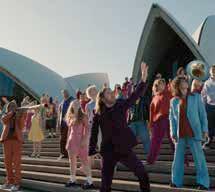


Mastercard “Room for Everyone” by McCann Poland, Warsaw Mastercard aimed to shift the negative perceptions of Ukrainian refugees by highlighting the positive economic contributions of Ukrainian-owned businesses in Poland. It created a new app, Room for Everyone, that used Mastercard data to show that Polish and Ukrainian businesses are more successful when they work side by side in Poland.




The two-minute film featured atmospheric clips of what appeared to be
football. But it is later revealed that it was actually women’s football and CGI had been used to illustrate how both forms of the game are equally exciting.

CREATIVE EFFECTIVENESS LION


Heinz “It Has to Be Heinz” by Rethink Heinz was at risk of being undercut by generic, off-brand ketchup. To re-ignite an emotional connection with consumers, the brand created a series of work over five years to show that “It has to be Heinz”. It ran a total of eight campaigns over the period – all of them to prove of all the thousands of tomato ketchups in the world, there was only one genuine ketchup. The ads ranged from asking people and AI to draw ketchup ( they ended up drawing Heinz) to calling out restaurants for ketchup fraud when they fill Heinz bottles with generic ketchup.

DESIGN LION



Sol Cement “Sightwalks” by Circus Grey
The cement brand enhanced tactile paving – lines on pavements that help visually impaired people navigate – with vertical lines to help users recognise their destination. This allowed visually impaired people to recognise the exact business in front of them by tapping their cane.
DIRECT & ENTERTAINMENT –GAMING LIONS

CREATIVE STRATEGY LION


KPN “A Piece of Me” by Dentsu Creative Amsterdam
This campaign for the Dutch telecoms company shone a light on the fast-growing issue of online shaming and its impact on young people’s mental health. The campaign’s title referred to a song and music video that told the true stories of Gen Z. The track was streamed more than 10 million times and helped change the law against sending intimate images without consent.



The push was built on the idea that football fans often think they can be superior managers to the pros. It was led by Xbox kicking off a recruitment drive using the Football Manager 2024 video game, the winner of which was invited to join Bromley FC as a tactician.


DIGITAL CRAFT LION


Spotify Advertising “Spreadbeats” FCB New York
In a bid for media planners’ budgets and positioning itself as a platform for video ads, Spotify created the first music video coded and experienced within an Excel spreadsheet. The music video follows a green cell through different sheets of ASCII and Unicode artwork to a dance track.

ENTERTAINMENT LION



ENTERTAINMENT –MUSIC LION


Johnnie Walker “Errata at 88” by Almap BBDO Sao Paulo Integrated campaign “Errata at 88” promoted Diageo’s Johnnie Walker and centred on giving a platform to the overlooked singer Alaíde Costa. The campaign was designed to grab people’s attention by presenting Costa as “The Forgotten Mother of Bossa Nova”. The artist helped to create the Bossa Nova genre but was overlooked because of her skin colour and social status.



CREATIVE COMMERCE & SUSTAINABLE DEVELOPMENT GOALS LIONS

Renault Group “Cars to Work” by
The campaign was designed in response to the lack of opportunity faced by many French people trying to find work due to lack of a car or public transport. The automotive firm provided cars for free to people during job trials, which they would have to pay for only once they had attained full-time employment.

GLASS LION FOR CHANGE

ENTERTAINMENT –SPORT LION




The telco’s ad superimposed popular French male footballers onto real footage of female players to highlight viewers’ potential preconceptions of female football. The ad used deepfake technology to prove that the only difference between men’s and women’s football is the prejudice faced by women players.





“The Square Metre” by
The furniture retailer responded to the cost-of-living crisis with a pantomimic film showing the endless possibilities of a square metre. The 60-second film showed a man getting ready for his day in a single square metre space, which the in the spot transforms around him depending on his needs, from a shower to a small dining room table.








Reporters Without Borders “The First Speech” by Innocean Berlin
The films – “The First Speech – Russia,”, “The First Speech – Turkey” and “The First Speech – Venezuela” – all aim to challenge autocratic politicians. They shine a light on the optimistic words used by modern autocrats when they became presidents, but who also end up turning against human rights and independent journalism. The ads end with the tagline: “The loss of freedom is never obvious at first.”

INNOVATION LION



The
enables assessment through
samples. By examining features like pitch and intensity, the tool allows everyone with a mobile phone to receive a diagnosis through voice analysis.






Frankfurter Allgemeine Zeitung “The 100th Edition” by Scholz & Friends “The 100th Edition” was the German newspaper Frankfurter Allgemeine Zeitung’s 100th addition to its photo series “Brilliant Minds”, which began 25 years ago. The photos have been of famous and notable people reading Frankfurter Allgemeine Zeitung in environments representing their work and achievements. “The 100th Edition” featured 102-year-old Holocaust survivor Margot Friedländer.

LIONS HEALTH GRAND PRIX FOR GOOD



UN Women “Child Wedding Cards” by Impact BBDO, Dubai
Members of the National Assembly of Pakistan received an invitation to a fictional child’s wedding. Through a wedding card that would suit a child’s wedding, designed entirely by children, UN Women persuaded the Federal Islamic Court to raise the minimum age of marriage to 18.



The e-commerce website held a Black Friday treasure hunt inspired by its logo, a handshake. When people shook hands in TV shows, a QR code appeared onscreen directing viewers to contextualised offers from the retailer. The spot led to people hunting for the handshakes in TV shows.



Siemens Healthineers “Magnetic Stories” by Area 23 “Magnetic Stories” turned the intimidating sounds of MRI machines into engaging children’s audiobooks to reduce young patients’ anxiety. The brand collected the different sound sequences from the machine and synced them with story moments in books.




Magnum “Stairs”, “Corner” and “Doorstep” by



Coca-Cola “Recycle Me” by Ogilvy New York “Recycle Me” showed Coca-Cola’s famous logo being crumpled repeatedly in a variety of ways, including by hand, a recycling plant press and vacuums, all in the name of urging people to “Recycle Me”.



CeraVe “Michael CeraVe” by Ogilvy PR New York Skincare brand CeraVe sparked rumours using four influencers, social and PR partners that celebrity




Pet food company Pedigree matched potential new owners to rescue dogs by upgrading canine photos to studio-quality shots and featuring them in outdoor ads that direct people to an adoption site.



Doordash “DoorDash All the Ads” by Wieden & Kennedy Portland To prove that it could deliver more than just food, DoorDash promised to deliver a product from every ad aired during the Super Bowl to one lucky viewer. Leading up to the event, every time a brand announced their ad, Doordash added the product to their prize. They placed their ad in the fourth quarter of the event to “intercept every brand conversation” as the ads were released.


The heart-pounding excitement of stepping into the Audio & Radio jury room for the first time. The pride of landing 28 shortlists and winning six Lions across four brands. When I look back, I realise this year’s edition of Cannes Lions had more unexpected thrills than an Italian soap opera. The drama and excitement didn’t end there. We made history with Arla Foods, celebrating their first Lion and achieving their first Titanium shortlist. Now, let’s move from my head and heart swelling with pride to inside the jury room.
Being a juror in the Audio & Radio category was absolutely mindblowing. Picture this: being surrounded by a bunch of audio geniuses, each one more talented than the last. Major props to Simon Vicars, our fantastic jury president, who kept things breezy and fun. And, of course, a big thank you and high-five to my fellow jurors for lending their sharp ears and brilliant insights during those intense two days.
Radio advertising today is far more than just catchy jingles. We’re talking about witty writing, cutting-edge tech, and ads that pull at your heartstrings.
The crème de la crème of audio ads are the unforgettable ones and the ones that are most engaging. They masterfully blend sound engineering with creative brilliance. It’s those simple yet disruptive ideas that turn an ad into a Cannes darling. And the ones that irrefutably stand out? They forge the deepest connections, using sound to tackle real issues and tug at our emotions.
Remember that Specsavers ad where Rick Astley reimagined “Never Gonna Give You Up” with hilarious







new lyrics? Pure genius. It’s a perfect example of tapping into the potent power of nostalgia through sound, surprising audiences in a way that not only entertains but also ensures that the message sticks.
One of the festival’s most poignant moments was the recognition of “Assume that I Can” by Coordown, a campaign dedicated to ending prejudice and championing the potential of individuals with Down syndrome. The entire industry honoured Madison Tevlin, the inspiring face of the campaign, with a standing ovation as she and the crew took to the stage. Cheering her and the team for those few seconds felt like being part of a historic moment and witnessing a fundamental shift in the industry where inclusivity now feels like a mandate, not an afterthought. But here’s the real takeaway from Cannes: ads shouldn’t feel like ads. The best campaigns engage us in a way that feels oh-sonatural. They entertain, inform, and, most importantly, don’t kill our vibe. We’re talking about turning brand monologues into compelling consumer dialogues. Let’s be honest – tech is awesome, but without that spark of human creativity, it’s just a bunch of noise.
By
Federico Fanti, Chief Creative Officer, FP7 McCann


























































































































his version of Cannes Lions showed exceptional craftsmanship, with creativity being clearly visible and noteworthy. One of the most important lessons I’ve picked up? Creativity and humanity are inseparable.



This year’s work displayed a greater degree of boldness and bravery than that from prior years. It was evident that the goal was to ensure that campaigns had a profound human resonance in addition to being compelling. Several winning campaigns exemplified this by fusing cutting-edge technology with classic craftsmanship and modern design. For example, Siemens’ “Magnetic Stories” is a unique audiobook collection created for younger patients, turning the terrifying experience of an MRI scan into a magical voyage. Since every MRI scan generates a different set of sounds, customised audiobooks were made to anticipate and coincide with the sounds that will be heard during the scan. This innovative illustration of blending empathy with technology demonstrates how human-centric creativity can create meaningful experiences.
























Another interesting observation was the application of AI. Unlike in previous years, when there was a fear of it taking control, some campaigns demonstrated AI as a tool that fosters innovation. Seeing how AI is being used to quickly and dramatically boost ideas was inspiring.





















An essential lesson from this year’s Cannes Festival is the importance of sticking with an idea, even if it seems unusual, weird and takes time to develop. Spotify’s “Spreadbeats” exemplifies this perfectly. Despite adding new video ad units, marketers primarily viewed the platform as an audio service. To change this perception, Spotify created “Spreadbeats”, a four-minute music video made entirely in Excel using colour coding and formulas familiar to media strategists. In an effort to alter this view, it took them approximately nine months to develop this. Long, crazy, but rewarding.




In my opinion, future campaigns will come from a fusion of technological innovation and human-centred creativity. There is growing knowledge of the use of technology fuelled by AI’s potential while adhering to the fundamentals of human storytelling.
By Karim Mroueh, Head of Digital & Innovation at Serviceplan Middle East
Immortalised creativity: Ali Rez, Titanium juror and four-time Grand Prix winning CCO, shares the top takeaway from the Palais.
On the last evening of the 2024 Cannes Lions festival, the Lion of St. Mark was – much deservedly – awarded to the legend that is Jacques Séguéla, who delivered one of the most memorable speeches ever given at the Palais. His talk had several nuggets of brilliant wisdom, including the accurate insight that ideas are like spermatozoa: you might have millions, but one will stick.
Amidst all that he said was something I am certain will stay with me; in fact it is now forever enshrined on a Post-it note on my desk: “Every ad is a shot at eternity.”
In what is arguably one of the most beautiful opening scenes in film history, ‘Contact’ shows the audience what happens to radio waves that travel seemingly forever in space (radio waves, after all, are light waves). Amongst the various groundbreaking phrases uttered by humankind on radio that you encounter as you drift through outer space farther away from Earth, ranging from





Roosevelt’s emphatic 1941 address to Congress, to the profound ‘Wannabe’ by the Spice Girls, is the 1977 commercial jingle for Almond Joy: “Sometimes you feel like a nut.” Joey Levine would be delighted to know that the waves for this track are probably passing the planet Kepler-22b right now, many lightyears away.
When Francis Ford Coppola sat down at Caff è Trieste in San Francisco to write the screenplay for The Godfather, little did he realize that what he was creating is going to be probably viewed as long as there are humans.
Mary Shelley whipped out Frankenstein due to a bet that Lord Byron placed while on vacation, and transformed the horror literacy genre with work that will be published forever. And who can deny the cube that Ernő Rubik gave the world? All examples of eternal creativity.
Art director William Bernbach was no different. As long as there is advertising – or
creative communications for that matter –his work will be discussed. The Volkswagen ads are eternal. As are the BMW Films, which reinvented the branded content era and set us all on a new path, while winning the first Titanium Grand Prix at Cannes Lions.
That’s what most of the Titanium or Grand Prix-winning work at Cannes feels like: creativity that is transformative at an eternal scale. Stuff that you’d look at fifty years from today and still say, “Huh, that’s pretty brilliant.”
If there is one lesson to take away from Cannes Lions this year, it is that. Approach an advertising brief the same way Coppola approached his Olivetti Lettera 32 typewriter: to create work that feels eternal.
Create work that, when seen, will elicit an eternal roar much like Jacques Séguéla himself put it:
“Wow, wow, wow, wow, wow, wow.”
By Ali Rez, Chief Creative Officer, Impact BBDO
























































































































Time to let the cat out of Cannes and tell all about the key conversations, the top takeaways, the good, the bad, and the funny. Did Cannes live up to its billing?
By Ian Fairservice, Managing Partner and Group Editor-in-Chief of Motivate Media Group
Thought-provoking and inspirational as ever, Cannes 2024, the epicentre of global creativity, did not disappoint.
It was great to hear the Lions roar 22 times for the Middle East, as the region rallied an impressive assortment of metal cats in the South of France, including a Lions Health Grand Prix for Good for a campaign that proved extremely effective without the use of any special effects, celebrities, or AI.
In a world where we’ve got no shortage of tools, here’s a great reminder that it’s not the tool that makes the carpenter, but the knowledge and wisdom to know which one to use and why that truly

differentiates a campaign that works from one that doesn't.
Beyond the accolades and the celebrated campaigns, candid conversations from the Cabanas, The Palais, the Rotonde, and happy hours on The Terrace revolved around ways and means for marketers to attract meaningful attention. The solution discussed was to crafting a cocktail of creative commitment, human connection, and gainful commerce.
In an age when AI seems to be cranking the levers of media spend, campaign duration, and media channels to catalyse creative output and effectiveness, the importance of brand values and purpose
were highlighted by global leaders, who advised leaning into strategy rather than being creative for the sake of creativity.
Digital or physical, the currency of the new age seems to be attention, and to grab it, marketers are leaning into humour and the provocative.
Speaking of humour, here’s a standout from Cannes: the McDonald’s presentation was a good reminder why organisers must avoid having three senior executives from the same company on stage together, without an independent moderator.
The result was a lovefest or, to put it another way, senior management grading their own homework. For a company such as McDonald’s which specialises in takeaways, unfortunately there were few.
On the other hand, the Saudi tourism speaker, chief executive officer Fahd Hamidaddin, captivated his audience with a colourful overview of tourism opportunities and ambitions for the Kingdom.
In this case, the message was exactly what it said on the tin, something to inform people, or remind others, that Saudi has an incredible wealth of culture and touristic opportunities to discover.
I don’t think audiences mind presentations such as this all-positive message when that’s clearly what was intended.
That said, here’s the unspoken truth: everyone who has ever been at Cannes knows that it is famous not just for its awards and presentations, but obviously as a social, partying hotspot. None of the more than 50 guests who attended Val Morgan’s 10th anniversary luncheon on Ille Marguerite went away disappointed.
CEO Damian Keogh and his team once again hosted the perfect Cannes lunch in pretty much the perfect setting.
Together with our KSA partners, led by Mohamed Al Ayed, Athar Vice Chairman and








‘‘HERE'S A GREAT REMINDER THAT IT'S NOT THE TOOL THAT MAKES THE CARPENTER.”

























CEO of TRACCS, Motivate Media Group also hosted a business breakfast to introduce many exciting developments for the 2024 edition of Athar - Saudi Festival of Creativity. (More about this on the next page.)
Straight after that, we went on to a Campaign lunch with our colleagues from Haymarket. The catch up and conversation covered all things advertising, marketing, and, well, everything that Campaign stands for, over a lovely lunch at the Carlton Towers Hotel beach.
All in all, Cannes lived up to its billing. Record revenues in terms of delegates and awards – and, overall, another well deserved victory for this now 71-year-old institution that is Cannes. Long may it continue. À bientôt.













After an exciting reveal in the south of France, Athar shares a sneak-peek into its thrilling headline speakers, curated programme, and inspiring updates for Saudi students and young professionals.
By Anup Oommen
If you haven’t etched the dates into your calendar yet, now would be as good a time as any. Scheduled for November 5-6, the Athar – Saudi Festival of Creativity is finalising its programme as planning and preparations move into high gear.
Saudi Arabia’s largest get-together of the creative marketing industry, gathering under the roof of the Crowne Plaza Riyadh RDC Hotel & Convention Centre, is poised to generate more than 100 hours of creative content on effective strategies, artificial intelligence (AI) advancements, and current and future challenges facing the industry in Saudi Arabia.
To set the tone, Motivate Media Group and KSA partners TRACCS, the event presenters, hosted an exclusive business breakfast at Cannes, celebrating the launch of the second iteration of the creative festival.
Led by Ian Fairservice, Athar Chairman, Managing Partner & Group Editor-in-Chief of Motivate Media Group, alongside Mohamed Al Ayed, Athar Vice Chairman and CEO of TRACCS, the breakfast outlined exciting developments to a room full of leaders representing the likes of Saudia, MBC Media Solutions, STC, Massive Music, Burson, Havas Middle East, and FP7 McCann, among others.
For those who were unable to attend the Cannes briefing, here’s a quick wrap-up of what’s been formalised for Athar 2024 so far.
The festival has confirmed Sir Martin Sorrell, Founder of WPP and the Founder and Executive Chairman of S4 Capital, as well as Saudi creative veteran, Mohamed Bahmishan, the CEO and Chief Creative Officer of FP7 McCann Saudi Arabia, as the headline speakers.
The event presenters have already received approximately 400 content submissions to date from Saudi Arabia, the MENA region, and across the globe. Marketers, creatives, and brand strategists have shared perspectives on the key trends and
challenges within the Saudi market. The curated programme for the two-day event will comprise several insightful sessions, top-tier networking opportunities, and an impressive lineup of expert speakers in the spotlight.
Additionally, the programme has also announced four Young Talent Academies – offering learning and development sessions for young and upcoming talent in the creative marcomms sector.
The Student Creative Academy, Student Marketers Academy, Nextgen Creative Academy, and the Nextgen Marketers Academy are open to full-time university students between the ages of 18 and 25, as well as young professionals below the age of 30 years within the creative communications, advertising, and marketing fields.
The four academies will not only nurture talent in the Kingdom, but will also facilitate connections with mentors and industry leaders. With a majority of the Saudi population under the age of 35, supporting young talent is a key pillar for the Kingdom’s growth and Vision 2030. In line with this vision, the four academies will help students kickstart their careers and help young professionals in the workforce upskill and unlock avenues to career growth.
Applications are completely free for the academies, which will educate and inform through keynote sessions from industry experts, workshops, a 24-hour hack, interactive presentations, and competitions, with the winners being showcased on stage at the Athar Awards.
The registration portal for the festival and the awards has now been opened, with special pricing for students and individuals aged 30 and under, as well as exclusive early bird pricing for other delegates.
To confirm your attendance and take advantage of the exclusive offers on hand, scan the QR code on this page and buy a pass today.
AUG 2024
CAMPAIGN MEDIA NETWORKING NIGHT (DUBAI, UAE)
SEPT 2024
CAMPAIGN BREAKFAST BRIEFING (DUBAI, UAE) The Future is Now
OCT 2024
CAMPAIGN SAUDI BRIEFING (RIYADH, KSA) Media & Marketing 2024
FEB 2025
CAMPAIGN BREAKFAST BRIEFING (DUBAI, UAE) Ramadan Advertising & The Year Ahead
APR 2025
CAMPAIGN BREAKFAST BRIEFING (DUBAI, UAE) Marketing Strategies
DEC 2024
CAMPAIGN AGENCY OF THE YEAR MIDDLE EAST AWARDS (DUBAI, UAE)
NOV 2024
CAMPAIGN BREAKFAST BRIEFING (DUBAI, UAE) Out of Home 2025
MAY 2025
CAMPAIGN SAUDI BRIEFING (RIYADH, KSA) Talent & Technology
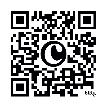


SAUDI FOCUS















Saudi media and advertising veteran Faisal Ali Al Eisawi talks about hurdles around people, culture, and tech that marketing agencies need to overcome.
By Anup Oommen
The world is changing at its fastest pace since the days of the industrial revolution. We’re embracing a world where we have one group of consumers who are struggling to keep up with the latest technological and digital advancements, while another generation of customers are demanding an active seat at the table through co-creative immersive and interactive media channels and digital technologies.
Marketers in the Middle East have quite a task on their hands – to ensure that their brand-building and sales efforts are in equal parts nostalgic, culturally relevant, and steeped in tradition and respect, while simultaneously welcoming a cultural makeover in a world of GenAI, Gen Z, and purpose-driven workforces.
Campaign Middle East spoke to Faisal Ali Al Eisawi, a seasoned veteran of Saudi Arabia’s media and advertising sector, about the cultural challenges facing marketing agencies, the need to prioritise people as a core element of success, embracing human-AI collaborative workflows, and much more.




Speaking to Campaign Middle East in a candid conversation, Al Eisawi did not mince words.
“Absolutely, marketing agencies need a cultural overhaul. We’re not talking about minor tweaks here; we’re talking about a full-on transformation to keep pace with GenAI, Gen Z, and the new wave of purposedriven workforces,” he said.
When queried further, Al Eisawi pointed to diversity and inclusion as the first cultural challenge to tackle.
“Diversity and inclusion isn’t just a box to tick; it’s about creating an environment where diverse ideas flourish and drive innovation. Next, we need to embrace a culture of continuous learning. Technology is evolving at breakneck speed, and if we’re not learning and adapting, we’re falling behind. Aligning the agency’s mission with societal values isn’t optional anymore – it’s essential to attract and retain top talent who want to make a difference,” he added.
“Lastly, integrating advanced technologies into our daily workflows is crucial. We need to ensure every team member is not just comfortable with these tools but is using



targets


them to enhance creativity and productivity.”
Currently serving as the regional managing director of Digitect, one of the fastestgrowing integrated communication agencies in the region, Al Eisawi is open about the fact that his professional journey has been shaped by mentorship from some of the industry’s finest professionals.
As such, he advocates a people-first approach, with a specific focus on transparency, teamwork, and talent development.
“People are the heartbeat of any great agency. Building the right core team is non-negotiable, but it’s just the start,” he explained.
Al Eisawi said: “Transparency isn’t a buzzword; it’s the foundation of trust and open communication. Teamwork amplifies our creative potential and problem-solving prowess, turning good ideas into game-changers."
"Investing in talent development is about keeping our team dynamic and hungry for growth. We must balance clear timelines and

sustained success,” he added.


targets with the flexibility to accommodate the creative process. Prioritising people isn’t just a strategy; it’s the only way to ensure






HUMAN-AI COLLABORATIVE WORKFORCE








The conversation then transitioned into the role of humans in the world of AI. Al Eisawi agreed that AI is not going anywhere; that it’s here to stay. He also agreed that marketers who use AI are going to run miles ahead of those who don’t.

He said, “Let’s get one thing straight: AI isn’t here to replace us; it’s here to supercharge us. By leveraging a human-AI collaborative workflow, agencies can elevate their campaign effectiveness to new heights.”
Al Eisawi went on to explain how working with AI can free up time, improve decisionmaking, and create campaigns that truly drive value and resonate with consumers.
“AI can sift through mountains of data to provide real-time insights and trends, grounding our brainstorming in concrete, actionable information. During the drafting phase, AI can churn out ideas and content at lightning speed, freeing up human creativity for refinement and innovation,” Al Eisawi explained.
“When it comes to personalisation, AI can craft highly tailored content at scale, ensuring our messages hit the mark every time. And for optimisation? AI’s ability to monitor and adjust campaigns in real-time means continuous improvement and relevance," he said.
"This isn’t about choosing between human and AI; it’s about harnessing the best of both worlds to create campaigns that truly resonate,” Al Eisawi added.
But in order to bring out the best in people and the best of AI, will brands and marketing agencies need to empower robust leadership?
Al Eisawi answered, “Bold, informed leadership is what drives us forward. It differentiates us in a crowded marketplace and creates an environment where creative and strategic thinking can thrive. It’s not just about staying ahead of the curve; it’s about setting the curve.”
“In the fast-paced world of marketing, bold, informed leadership isn’t just important; it’s indispensable. It’s the key to navigating complexity and achieving long-term success,” he concluded.
In the competitive world of luxury brands, where exclusivity and exceptional quality are paramount, customer experience (CX) and loyalty stand as critical pillars for success. The age-old adage 'less is more' resonates deeply within this realm, suggesting that simplicity might be the key to winning hearts and wallets.
However, in an era when emerging technologies are reshaping every facet of interaction, the question arises: Does good CX and true customer loyalty rely on simplicity, and if so, how can complex emerging tech be used to achieve this?
Luxury brands thrive on creating a promise of an effortless yet exquisite experience. Simplicity in this context means a frictionless journey, where every touchpoint is intuitive and every interaction feels bespoke. The modern luxury consumer, often well-versed in technological advancements, seeks not just products but a seamless experience that complements their lifestyle.
Simplicity manifests in various forms: a minimalist yet stunning website design, a streamlined checkout process, or an app that intuitively understands user preferences. When executed well, simplicity enhances the perceived value of the brand. It eliminates the clutter and complexity that can detract from the essence of luxury, ensuring that the focus remains on the product and the experience it delivers.
Chanel’s website is a paragon of minimalist design, with clean lines and an intuitive interface that guides users effortlessly through its collections. The checkout process is streamlined, reducing the number of steps and potential friction points. By focusing on simplicity, Chanel ensures that the digital shopping experience is as luxurious as visiting one of its boutiques.
TECH-POWERED BESPOKE EXPERIENCES
While simplicity is the goal, the path to achieving it often involves navigating the complex landscape of emerging technologies. Artificial intelligence (AI)
“THE CHALLENGE: ENSURING THAT THE SOPHISTICATION OF TECH ENHANCES THE SIMPLICITY OF THE EXPERIENCE.’’
and augmented reality (AR) are prime examples.
AI plays a pivotal role in personalising the luxury experience. Through sophisticated algorithms, AI can analyse vast amounts of data to predict customer preferences and behaviours. Gucci leverages AI to provide a personalised shopping experience both online and in-store. Through its app, customers receive tailored product recommendations based on their browsing history and preferences. In stores, sales associates use AI-driven

insights to better understand customer preferences and provide more personalised service. This use of AI helps Gucci maintain its reputation for exclusivity.
For luxury brands, AR can transform how customers interact with products. Imagine a high-end jewellery brand using AR to allow customers to virtually try on pieces from the comfort of their home. Similarly, Burberry’s app includes an AR feature that allows customers to see how products, such as handbags and accessories, would look in real life. By pointing their smartphone camera, users can visualise these items in their surroundings. The technology behind this experience is complex, but the result is a simple, engaging, and highly personalised interaction that enhances the overall customer journey.
Luxury brands must focus on creating a frictionless front-end experience, where the complexity of technology enhances rather than hinders the customer’s journey. This requires a deep understanding of both the technology and the consumer, ensuring that
every digital innovation aligns with the brand’s ethos of simplicity and elegance. Moreover, brands must invest in educating their customers about these technologies in an accessible and engaging manner. Transparency in how data is used, clear communication about the benefits of these technologies, and a commitment to maintaining the highest standards of privacy and security are essential in building trust and loyalty.
Louis Vuitton’s digital transformation includes the use of AI for personalised recommendations and AR for virtual try-ons. However, the brand has ensured that these technologies are integrated in a way that enhances the customer experience without overwhelming it. The result is a seamless, intuitive shopping journey that reflects the brand’s commitment to luxury and innovation.
In the luxury brand landscape, good CX and true customer loyalty do indeed rely on simplicity.
However, achieving this simplicity often involves the strategic use of complex emerging technologies. By harnessing AI for personalisation and AR for immersive experiences, luxury brands can create a seamless, elegant, and deeply satisfying customer journey. The challenge lies in ensuring that the sophistication of the technology enhances the simplicity of the experience, reinforcing the brand’s promise of luxury. As seen with Chanel, Gucci, Burberry, and Louis Vuitton, the successful integration of these technologies can elevate the luxury CX, creating lasting customer loyalty and reinforcing brand prestige.
By Jon S. Maloy, Co-Founder & CCO, Bureau Béatrice





































Gone are the days when merely managing relationships sufficed to sustain brand relevance and loyalty, says Ogilvy One’s Hazem El Zayat.
By Hazem El Zayat, Chief Experience Officer – MENA, Ogilvy One



“We’re using data to inform our messaging, deliver personalised communications, drive better results and higher ROI.” Are you really? What makes a good strategy a good measure for improved ROI? The marketing landscape is evolving rapidly. Traditional strategies that inundate consumers with generic content are no longer effective. Attention is scarce, and brands compete for seconds from consumers.
The antiquated, one-directional communication strategies that dominated brand interactions have become obsolete. Today’s consumers expect personalised, engaging experiences that reflect preferences and behaviours. With 73 per cent of customers stressing the importance of being recognised and understood, the dynamics of consumer-brand interactions must respond to this transformation. Gone are the days when merely managing relationships sufficed to sustain brand relevance and loyalty. While integrating a suite of strategies can enhance brand equity, achieving customer-centricity is complex. Brands need to leverage their strategy, data, technology, and process capabilities to deliver personalised value through orchestrated interactions that creatively utilise marketing programmes.
This challenge underscores the need for brands to shift focus from managing to crafting customer relationships.
interaction becomes an opportunity to orchestrate meaningful experiences that resonate deeply with consumers. The journey toward brand devotion starts at acquisition and continues throughout the customer’s lifecycle. From the initial point of contact to post-purchase, each phase needs curation that fosters connection and loyalty, synergising brand marketing, customer experience, and loyalty initiatives in a personal and compelling manner, to address emotional and rational needs.
innovation and technology, brands can create meaningful, personalised customer experiences that exceed their audience’s messages and experiences are relevant for individuals, determine the
Ogilvy One is at the forefront of this shift, leading with its innovative approach, Relationship Design.
This shift reflects an acknowledgement of the role relationships play in driving success. Relationships are not mere transactions but intricate networks of emotional, psychological, and functional bonds that bind consumers to brands, and are addressed through influencing behavioural triggers; a unique Ogilvy capability brought to our partners through our behavioural science practice. To overlook the significance of these relationships is to risk relegation to the periphery of the consumers that keep your brands alive.
As the rules of customer relationships undergo this transformation, propelled by advancements in AI, brands must transcend traditional, one-way communication models. By adopting a dynamic, relationship-crafting approach that harnesses the latest in marketing innovation and technology, brands can create meaningful, personalised customer experiences that exceed their audience’s expectations. AI can be a disruptive ally helping brands predict which messages and experiences are relevant for individuals, determine the most effective time and channel for interaction, provide alerts when someone is at risk of churning or identify opportunities that may typically be challenging to recognise.
But don’t let the machine fool you. While AI can be a brand’s best technology means nothing without a strategic and creative mindset to effectively utilise it. This approach meets customers where they respond
most effective time and channel for interaction, provide alerts when typically be challenging to recognise.
But don’t let the machine fool you. While AI can be a brand’s best mate when it comes to CRM and loyalty programmes, this technology means nothing without a strategic and creative mindset to effectively utilise it. This approach meets customers where they are and leverages the transformative power of AI and creative marketing to tailor experiences that resonate on a deeper level, ultimately leading to significant returns on investments.
marketing to tailor experiences that resonate on a deeper level, ultimately leading to significant returns on investments.
with promotions or generic newsletters where brands businesses must make people feel something, evoke emotions, and creatively offer more than the product overlook the significance of these relationships is to risk relegation to




It’s not enough to send occasional communications with promotions or generic newsletters where brands share what they want people to know. To be relevant, businesses must make people feel something, evoke emotions, and creatively offer more than the product or service they sell, adding value to the customer experience. By correlating RFM data to SKUs on-sale for a retail client, Ogilvy One increased interactions and engagement by over 300 per cent, generated AED 8 million in incremental sales and drove physical footfall to stores, delivering campaign ROI of over 30x.






marketing, today Ogilvy One embraces a comprehensive approach to designing relationships, blending creativity, data-driven insights,
Stemming from David Ogilvy’s ‘secret weapon’ of direct response marketing, today Ogilvy One embraces a comprehensive approach to designing relationships, blending creativity, data-driven insights, and AI-powered solutions.
We are backed by Verticurl, a 20-year-old, 2500+ man powerhouse, at
and one of the world’s leading marketing technology services




AED 8 million in incremental sales and drove physical footfall to stores, delivering campaign ROI of over 30x. design, brands embark on a journey of purposeful engagement with their audience. Brands experience. By correlating RFM data to SKUs on-sale for a retail client, Ogilvy One increased interactions


In embracing the ethos of relationship design, brands embark on a journey of purposeful engagement with their audience. Brands need to shift from managing one-dimensional, one-channel-based relationships to designing ecosystems in a fluid array of channels that deliver on the relationship requirements of consumers. Every touchpoint and








We are backed by Verticurl, a 20-year-old, 2500+ man powerhouse, and one of the world’s leading marketing technology services agencies, with expertise in assessing, deploying and integrating martech platforms, activating customer experience technologies, and addressing marketing’s most pressing challenges from improving customer experiences to achieving better ROI from martech. Ogilvy One and Verticurl maintain key relationships with the world’s leading technology providers including Adobe, SalesForce, Sitecore, Tealium, Braze and many others, and have been at the forefront of innovation, customer experience strategy and martech consulting for many of the region’s leading brands including Aldar Properties, Al-Futtaim, Central Bank of the UAE, Abu Dhabi Commercial Bank, American Express, Expo 2020 Dubai, Emirates NBD,
martech platforms, activating customer experience technologies, and addressing marketing’s most pressing challenges from martech. Ogilvy One and Verticurl maintain key relationships with the world’s leading technology providers including






















Central Bank of the UAE, Abu Dhabi Commercial Bank,
experience strategy and martech consulting for many of the American Express, Expo 2020 Dubai, Emirates NBD, and others.










So the next time you embark on increasing impact, ask yourself if you really are ‘operationalising’ the data you have at hand, crafting messages accordingly to the channel and time of


So the next time you embark on increasing impact, ask yourself if you really are ‘operationalising’ the data you have at hand, crafting messages accordingly to the channel and time of preference of audiences, and landing the desired valuable action for both brand and customer.
relationships to designing ecosystems in consumers. Every touchpoint and preference of audiences, and landing the desired valuable action for both brand and customer.







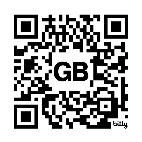






The UEFA Euro 2024 tournament took the UAE, and the world, by storm. However, for those not fortunate enough to attend the games in Germany, settling for a fan zone experience in Dubai was the next best alternative.
Hisense provided fans with this opportunity as the gold sponsor for the Euros this year. As part of its sponsorship, the Chinese electronics brand launched an integrated campaign titled ‘Beyond Glory’. Part of the campaign’s activations was an on-ground Hisense Fan Zone at the Arabian Ranches Golf Club in Dubai.
When asked about the purpose behind such a premium viewing experience, Fazalur Rahman, Regional Marketing Director, Hisense MEA, explained, “This approach fosters positive brand associations that go beyond a single event, and it builds lasting customer relationships.”
He added that, beyond displaying the matches on Hisense screens, the brand wanted to give people an experience “worth remembering”. The team at Hisense spent months strategising how best to immerse the consumers of the UAE into the brand.
“Our strategy aimed to capitalise on the excitement generated during events,” he said.
“We took a meticulous approach, carefully considering the target audience, the specific event theme, and the desired brand experiences we wanted to create.”
The Hisense team wanted to welcome the families in Dubai who would skip out on a pub game-night and watch the match at home instead.

Shantelle Nagarajan steps into the Hisense Fan Zone in Dubai to evaluate if the marketing strategy has made an impact.
“That’s why we partnered with the Arabian Ranches Golf Club to create a welcoming space that caters to all ages,” Rahman said. “Showcasing our products in this way provided people with the opportunity to experience Hisense technology first-hand.”
“This approach not only enhanced brand loyalty but also positioned Hisense as the go-to choice for top-quality viewing and entertainment,” Rahman added.
Campaign Middle East witnessed emotions rising in front of Hisense television screens while fans enjoyed the comfort of the brand’s air conditioning units shielding them from the Dubai heat. We also spoke to several people experiencing the on-ground activation.
The reactions we received, however, were mixed.
Alexander Franke, chief financial officer at K&S was at the Fan Zone watching the Germany vs. Spain quarterfinals with friends and family. Franke didn’t notice the Hisense branding on any of the main entrances to the Fan Zone, and the massive Hisense logo above the screen was lost on him.
“I was too focused on everything happening underneath the branding, on the game. If it wasn’t pointed out to me, I wouldn’t have seen it at all,” he said.
On the other hand, Hyno Jose, an ADNOC employee, said he was

well-aware of the Hisense experience. After sharing his take on “the brilliant atmosphere”, Jose’s first question was, “How much do you think one of these TVs cost?”
Other sentiments were varied.
Kheireddine Sifaddi, a project management specialist from Canada, didn’t know of the brand previously and wondered what the company was when he saw the branding placed at the Fan Zone. He was impressed with the quality of not just the screens playing the match, but also the outdoor airconditioning units. “It’s so cold in here, which is hard to believe at this time of the year. I would look for this product in stores when I go to buy a cooling unit for my garden,” he said.
Hisense also captured visitor feedback from the Fan Zone using advanced technology, the brand confirmed.
“To make sure that visitors are satisfied with their experience, Hisense continuously monitored and responded to feedback,” Rahman said. ““We used social media listening tools and online review platforms to track visitor sentiment and comments. Based on these insights, we took immediate actions to address any issues and enhanced the visitor experience.”

Did this brand building exercise result in measurable impact? After all, onground activations are not just about offering potential customers a good time. With a high investment, the pay-off needs to speak for itself. As such, to ensure conversion into sales, Hisense created added value and incentives for customers to make purchases.
“The heightened visibility translated into a notable surge in product interest and inquiries, contributing to a doubling of our sales compared with the same period a year ago,” said Rahman, providing evidence of the positive results of the on-ground activation.
The verdict? The proof is in the pudding. On-ground activations don’t always warrant the results a brand is looking for. However, the risk is worth the reward to create lasting positive customer relations within the brand-building exercise, and to improve revenues year on year through sentiment converting into sales.



















































































































































































































































































































When Rotana first partnered with health and fitness ambassador Nelly Attar, we knew it would strike a chord with our core audience on social media.
After all, as a Lebanese-Saudi Arabian mountaineer and the first Arab woman to summit the peak of K2, Nelly was already an inspiration to many.
What we didn’t anticipate was just how much a partnership with a powerhouse like Nelly would transform our entire approach to marketing and consumer engagement.
By integrating Nelly’s authenticity and passion for fitness into our brand’s social-media presence, we built a deeply engaging and enthusiastic community online.
There are lessons for us all to learn. Hospitality brands must do their due diligence and select meaningful partnerships that resonate with their brand ethos. The only question I’m repeatedly asked is: “How?”
Here are three ways long-term partnerships can elevate a hospitality brand’s marketing strategy.
ENHANCED BRAND REPUTATION AND REACH
For any long-term partnership to become a truly symbiotic relationship, both parties must benefit, and work
‘‘NELLY HAS CONSISTENTLY DRIVEN HIGHER ENGAGEMENT ON SOCIAL MEDIA’’
closely together to bring the partnership to life.
Here, the partner’s influence enhances the brand’s credibility, while the brand provides a platform for them to engage with a broad audience.
Brands that leverage their ambassadors’ unique profiles can create a consistent and genuine brand experience, humanising their offerings and emphasising their key message distinctly. Similarly, the ambassador benefits from the brand’s planning and dedicated resources for execution.
Our collaboration with Nelly is particularly resonant with young, health-conscious travellers who value pioneering wellness experiences. This enables us to tap into a vibrant market
Rotana’s Amal Harb reflects on the use of brand ambassadors as a marketing strategy in the hospitality industry.
segment eager for innovative health and fitness offerings. Since our partnership began in August 2023, Nelly’s content has helped generate over 25 million impressions across Facebook, Instagram, and LinkedIn.
Before forming a meaningful longterm partnership, it is important to consider how their persona and online presence will align with your brand’s key communication pillars. Selection is a critical step, as ambassadors must be able to cut across different interests and not be limited to a niche.

Nelly was a perfect match for Rotana’s core brand pillars, which touch on wellness, authenticity, and community engagement. She embodies a real, relatable person whose values resonate deeply with our brand ethos.
One of our most celebrated collaboration videos is the “Staircase Fitness Challenge”, featuring Nelly alongside our corporate and hotels teams as they scaled the 70 floors of the iconic Rose Rayhaan by Rotana, one of the tallest hotel towers in the world.
This exciting video captivated audiences, quickly surpassing 7 million views within 24 hours on



Instagram – more than double our typical brand videos.
The success was driven by Nelly’s dynamic and engaging approach to fitness, turning a daunting climb into a fun adventure. It also perfectly aligned with the Dubai Fitness Challenge, underscoring not only our commitment to local initiatives and promoting a spirit of health and vitality but also the importance of timely content.
Authenticity is not just a marketing buzzword; it’s a vital element in building trust and fostering meaningful relationships with our guests.
Long-term partners promote trust in the brand and have a far greater reach than many traditional advertising outlets.
Since the inception of our partnership, content featuring Nelly has consistently driven higher engagement on our social-media platforms, with a notable increase in likes, shares, and comments on average compared with other posts.
The Ras Al Khaimah Hiking Series further boosted the partnership to new audiences as it was reposted by Visit Ras Al Khaimah’s social-media pages.
By offering genuine content that reflects our commitment to health and wellbeing, guests don’t just see Rotana as a place to stay – they view us as a trusted partner in their wellness journey.
Long-term partnerships are foundational in the hospitality industry’s marketing world. They enhance brand credibility, deepen audience engagement, and create original, resonant content. Nurturing these relationships is key to sustaining growth and, ultimately, delivering guests more 'Treasured Time' opportunities.
By Amal Harb, Corporate Vice President Marketing, Rotana

Following Apple’s recent Worldwide Developers Conference, there has been a lot of chatter about the debut of its AI technology, Apple Intelligence.
And yet, Tim Cook’s first order of business was to discuss the updates to the Apple Vision Pro OS, detailing the opportunities it unlocks for entertainment, productivity and collaboration.
So, while Apple’s entry into the AI space is big news, it’s the upgrades to its existing technology that I find most exciting. It was over a decade ago that Meta’s Oculus Rift first launched VR headsets into the public limelight.
Tech giants like Google and Microsoft quickly followed suit, to varying degrees of success. Yet, despite the huge potential of VR technology, none of these devices was able to successfully
Brands can tell compelling stories that transform their products into meaningful consumer experiences, writes Tactical’s Mike Khouri.
However, out of the 1.5 milion compatible apps currently available on the device, only 2,000 were specifically designed for its spatial technology, leaving this space wide open for compelling user experiences.
One of the first apps to answer this call came from Gucci.
break through the barrier into mainstream adoption.
Enter Apple. A brand that consistently redefines categories by staying true to its founder’s vision of bringing creativity and technology to otherwise painful product experiences. Steve Jobs wanted Apple’s products to delight everyone who used them – by leaning into existing habits instead of trying to force new ones.
Over the decades we’ve seen this approach succeed in the iconic Mac, iPod and iPhone. Products that weren’t first to market, but that each
“AUDIENCES CAN STEP OUT OF THE PASSENGER SEAT AND BECOME THE MAIN CHARACTER.”
fundamentally changed their industries. From computing to music to communication, Apple has shaped the way we consume, connect and operate in our daily lives.
And now, with the launch of its Vision Pro headset earlier this year, it’s the entertainment industry that stands to be revolutionised next. With the device’s impressive immersive capabilities ushering us all into a new era of creative storytelling.
For those who have had the chance to play with the Vision Pro, it’s a thrilling experience that seamlessly blends physical and virtual worlds.
Of all the brands to show up in the entertainment arena and set a new standard, you wouldn’t expect it to be Gucci over the likes of Netflix, Disney or YouTube. Yet Gucci’s approach to the Vision Pro was to tell the story of its new creative director, Sabato De Sarno, with an interactive documentary that’s never been seen before.
I won’t spoil the story (definitely watch it, if you can). But I will comment on the unparalleled level of interactivity and cross-dimensional storytelling Gucci is able to subtly weave in and out of the experience. There are moments when you feel teleported to different scenes across Milan that make you feel like you’re actually there, and others when you can pick up products and inspect them with such detail, they almost feel real.
In leveraging Vision Pro’s capabilities, brands can tell uniquely
compelling stories that transform their products from items into meaningful consumer experiences. Gucci’s app empowers audiences to step out of the passenger seat and into the role of the main character, bringing them closer to the action than ever before.
And I can’t help but see the possibilities for a new format of brand entertainment that will carry over to sport, movies, gaming and so much more, especially when you consider this is the worst version of the Vision Pro we’ll see. It’s only going to get better.
Over the last few months at Tactical, we’ve been lucky to build some amazing stories and experiences for brands looking to engage and entertain their audiences using the Vision Pro. From tourism to luxury to sport, we’re developing branded experiences that extend beyond the traditional formats people have become used to.
And the results we’ve seen are magical. It’s not often you get to watch someone try something for the first time and say ‘wow’. But with the Vision Pro, it’s been a hit time and again.







The latest on enhancing content creation, user interaction, and platform transparency. Here are the key highlights:

Enhances its carousels


Text over carousels and multi-sized photo support bring more creative freedom to your Instagram posts.
Tries out “quiet posting” to profile Instagram now offers a "post quietly" option, letting users share content directly to their profiles without cluttering followers' feeds, providing a more discreet posting option.



Adds video quality selection
Users can now select the quality of a video before posting, offering more control over their content's presentation.
Develops a Grok Analysis button
X is working on a new feature to enhance AI fact-checking capabilities, ensuring content accuracy and credibility.
Considers paid AI assistant
Meta is developing a paid version of its AI assistant, which will include premium features for enhanced user experience.
Offers money-back guarantee
Meta now offers a money-back guarantee for verified subscribers if they're not satisfied with the experience, adding an extra layer of trust and security help on the go.



Unveils rule break timestamps
YouTube will soon share timestamps of where it thinks users broke its rules, providing clearer feedback and transparency.
Launches AI assistant tools
New AI assistant tools have been added for creators, including Breakout Videos that highlight top-performing videos from similar channels, offering insights and inspiration.



Announces live giveaways



Users can now create live giveaways, adding a new interactive dimension to live streaming.
Introduces Symphony AI tools
A suite of generative AI tools, ranging from avatars to AI dubbing, designed to help brands create more engaging content.
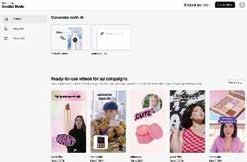



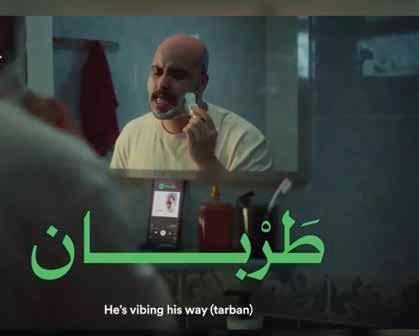







Head of Innovation, Livingroom Dubai
AL-FUTTAIM LEXUS (1):


Lexus’ ‘Made Personal’ refreshingly focuses on people, not just the car, unlike most ads in the category. It connects with the UAE audience, highlighting tailored luxury and exclusivity. Lexus, like other luxury brands, aims to forge emotional connections with its audience. I’m curious to see how the rest of the campaign will deepen this bond on a personal and direct level.
SPOTIFY (2):
What I most like about this campaign, beyond seeing people absorbed in music, is its ability to evoke indescribable emotions and capture the essence of ‘Tarab’ – a word that’s not easy to translate but embodies deep emotional human immersion. Profoundly Arabic yet universally relatable, it portrays the magic of music in connecting us beyond words.
SHARJAH EDUCATION ACADEMY (3):
Sharjah Education Academy’s new sonic identity is truly inspiring, blending traditional Emirati instruments with orchestral sounds. For a Western expat like me, I find it soothing, insightful, and a vivid reminder of the UAE’s rich culture. I always respect work that supports culture, and in this case it’s ironic yet admirable that an academic institution is teaching all of us to keep spreading culture.
EVIAN (4):
A campaign about iced Alps, in the beginning of summer, for a region with the highest temperatures on the planet, might not sound ‘regionally relevant’ at a first glance. And that’s why it works.
NESCAFE (5):
While the industry is asking for creative work to be more humorous, Egypt has been doing it since before it was cool, and this is a good example. Kudos to Nescafe as it’s hard to make a product-centric story engaging, but this campaign has that wit that leaves you wanting to see more funny situations compared.
Group CMO, Aramex International – Dubai
AL-FUTTAIM LEXUS (1):


Firstly, I am thrilled that Lexus has chosen to create a localised campaign. Let’s be candid – Lexus faces a considerable challenge in the UAE, where it has become the preferred car for Uber and Careem. To make consumers feel unique while driving a Lexus, something truly special is needed. This campaign effectively addresses this by appealing to individual personalities and highlighting that Lexus is customer-centric, with each car designed for the individual. This is a strong strategy to encourage people to see Lexus as their personal car of choice.
SPOTIFY (2):
If I had to choose one market where localisation is paramount in the Middle East, it would be KSA. So, well done Spotify! One thing I truly appreciate is simplicity. I love the one-word focus – it’s easy to understand and digest, provides a solid foundation for a campaign, and will definitely resonate with the local market. I think they nailed this one.
SHARJAH EDUCATION ACADEMY (3):
I have mixed emotions about sonic branding, but I like the fact that local sounds were used to produce this. It does play the part perfectly (excuse the pun) for what it is intended. I’ll be sure to keep an ear out for where and how this will be used.
EVIAN (4):
I appreciate the clever play on “Fountain of Youth”. The localisation could have been a bit stronger, as it feels like an international ad that’s been adapted instead of feeling like a local ad, but it’s a great ad overall and very well produced. The beat is catchy and engaging. While I prefer a more simplified approach, this complex ad is still impressive and effective. Great job.
NESCAFE (5):
I love this campaign. It’s simple and clearly highlights the features and differences, ensuring the consumer understands the product perfectly. The use of humour in the ad is fantastic and really resonates with the local market. It actually makes me crave a cup of coffee. Excellent execution and content. It’s perfect for the Egyptian market and can even work in other Arab regions. Well done.
Al-Futtaim Lexus
Title: Made Personal Agencies: Memac Ogilvy, PHD and Gambit Communications
Spotify Title: Tarab Agency: Science & Sunshine Production house: Film Pudding
Sharjah Education Academy Title: Sonic Identity Agency: WithFeeling
Evian Title: Mountain of Youth Agency: BETC Paris, Havas Middle East
Nescafe Title: 3-In-1 Shot Agency: FP7/McCann Cairo Production house: Everyone

Managing Director of Cicero & Bernay Communication Consultancy
Despite claims that social media has peaked, the landscape continues to reshape itself. We're seeing the rise of niche platforms and spaces tailored to individual interests, marking a shift towards more personalised media consumption. Users increasingly gravitate towards channels that match their personal hobbies or lifestyles.
News, views, and trends from across the spectrum
Moreover, multinational corporations are adjusting by partnering with less prominent influencers who have a deep impact within their circles. These emerging networks are creating opportunities for diverse voices, expanding the variety of interactions and media available online.
New social media platforms launched within the last year in the GCC.
The trend toward smaller, focused communities facilitates the discovery and involvement with media that seems tailor-made. As these specialised digital destinations expand, they contest the traditional broad-appeal model of older forms of delivery, o ering a more enriched experience for those with the devices in their hands as well as those seeking their interaction.
Gen Z-ers and millennials show the highest social media engagement levels.
Young adults use socials to find content related to their passions.
Source: UX-News.com Source: MarketingDive

Internet users who are part of a hobby or niche online community.


careful what
TikTok's newly launched app aims to rival Instagram by focusing on sharing real-life photos with close friends, emphasising authentic connections and spontaneous moments. The platform allows photo posting and interactive comments, but excludes videos.
Motorola's 'Styled With Moto’ campaign showcased the new Razr folding smartphones through a 30 -second video featuring virtual models in AI-generated outfits, including a soundtrack echoing the 'Hello Moto' jingle, marking Motorola’s foray into using generative AI in advertising.
YouTuber Marques Brownlee's viral review of the Fisker Ocean highlighted numerous flaws and software glitches. Despite Fisker's best efforts to address these issues, the company's continued instability and unresolved issues caused a decline in public opinion and presented the importance for brands to ensure their products meet high standards before sending them to influencers to review.

UM has announced the appointment of SUSANA TSUI
FITZPATRICK as CEO, UM UAE. The newly established role is a part of the global network’s plans to strengthen MENAT as a growth region for international brands. Fitzpatrick has held several key leadership roles within major agency networks across Asia Pacific and the UK. She most recently held the position of chief growth officer at EssenceMediacom UK.
regional marcom sector, with a proven track record of success in building and leading award-winning teams.


OMD Egypt’s managing director TAREK JAFFAR has been promoted to the role of chief executive officer, the media agency network has revealed. During his 13-year tenure at the group, Jaffar has risen through the ranks from the role of a business unit director to taking up the mantle of a CEO of OMD Egypt. Under his leadership, OMD built its client portfolio, adding, retaining, and growing major accounts including McDonald’s, Savola, Madinet Nasr, and Banque Misr.
BPG has appointed industry veteran CAMILLA D’ABO as its executive vice president of communications and content at BPG UAE.

D’Abo will oversee all aspects of BPG UAE’s comms and social content teams, working closely with Darius LaBelle, President BPG UAE and other members of BPG’s Group ExCo. She brings over 25 years of expertise in the
GroupM, WPP’s media investment group, has appointed of PAULINE RADY as its new regional managing director and client lead at GroupM MENA. Reporting to Amer El Hajj, the CEO of the group, Rady will establish best-in-class client excellence and scale business growth across the agencies. Rady joins GroupM with 16 years of media experience in the region. She said her main focus is to cultivate a mindset of thought leadership and establish the group as pioneers in the field of media innovation.

new role, El Badry aims to cement 4Sale’s market-leading position in Kuwait, using strategic campaigns to heighten brand awareness and reinforce the classified platform’s brand positioning and customer engagement.

FURRUKH JAWAID has joined General Motors (GM) as chief marketing officer to lead its marketing efforts across its vehicle brands, Chevrolet and GMC. GM said this move consolidates its growth plans. Most recently head of performance marketing and data enablement at General Motors Canada, Jawaid will oversee the teams across brand marketing, product marketing, CRM, retail marketing, and digital marketing, as well as retail and customer experiences for Chevrolet and GMC across the region.
4Sale, Kuwait’s largest online classifieds platform, has appointed FADILA EL BADRY as its new chief marketing officer. El Badry previously led star-studded marketing campaigns at Vodafone Egypt, featuring the likes of Liverpool FC star Mohamed Salah and Egyptian singer and actor Amr Diab. In her

Publicis Groupe Middle East & Turkey (ME&T) has promoted KHALED ABOU NADER to chief integration officer (CIO). The new position is a strategic role that has been created to drive better collaboration and strengthen the Groupe’s “Power of One” proposition. Abou Nader steps into this role from his current position as chief product officer. As CIO, Abou Nader will overlook and ensure the collaboration between the various functions, capabilities, clients, acquisitions, processes, technologies, and teams within Publicis Groupe across the region.
Publicis Groupe Middle East & Turkey has promoted ABED ISMAIL to head of integration. Ismail’s key responsibility in the new role will be to enable the Groupe’s integration goals and promote organisational success through value creation and strategic partnerships. As the former head of consultancy for the Practices division, Ismail has previously managed similar integration responsibilities across the diverse capabilities of the Groupe and will now support and accelerate the Groupe’s Power of One model.
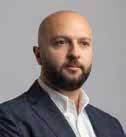

The Spin is a die-hard Game of Thrones (and House of the Dragon) fan and – believe it or not – has watched the series more than seven times.
So, when HBO and House of the Dragon brought their limitedtime activations to New York City in June, The Spin was genuinely excited. We scanned photographs of people sitting on the Iron Throne, watched CGI videos of banners declaring house allegiances (opportunities we had in the region, as well), and drooled over a score of customised GoT F&B options across the city.
Well, that lasted all of 15 minutes, until the photograph of a large blob of green sloppy goo wrapped around the Empire State Building surfaced.
The Spin’s first reaction was: “Is that CGI?” Once we figured out that it wasn’t, it took a good 10 minutes to figure out that the out-of-home activation was meant to be Vhagar – an actual inflatable balloon installation of the dragon.
The following five minutes were spent attempting to differentiate its head and wings from its tail.
While The Spin does appreciate the effort spent on the larger than life dragon, here’s a tip: maybe, next time, HBO could take a leaf out of Dubai’s books and have a swarm of drones take the form of a dragon to light up the night sky around the skyscraper rather than have a dragon quite literally



clinging on for dear life, clutching a building’s spire 102-storeys above midtown Manhattan.
CONSUMERS NOT GOING “WHEE” What happens when a brand is not marketed across the Middle East?
Weeks after TikTok ‘quietly’ launched Whee – an Instagramesque social media app to share photos with friends – barely

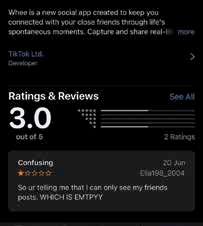
anyone knew it existed, with less than five-digit downloads across the entire region.
While the TikTok app touts 547,000 ratings on the App Store, averaging 4.7 out of 5, its latest app Whee had two ratings after thousands of downloads, with one user going as far as to say, “So ur telling me that I can only see my friends posts. WHICH IS EMPTY” (sic). The Spin did reach

out to TikTok for a comment, but did not receive a response.
The Spin took a ride down Sheikh Zayed road and turned off into Bur Dubai, because it found a transport van that asked: “Are you following us? (on social media)”. At first glance, it seemed cheeky and catchy, until The Spin realised that it was a great call to action without any way to actually action it.
There was no QR code, no URL, no company name behind the van – and although the social media icons (cue Larry the Bird, who has flown the coop) were printed loud and clear, there really was no way to ‘follow’ the van from the physical into the virtual world.
As The Spin has stated before, creativity for the sake of it doesn’t always result in ‘creative effectiveness’. Time to go back to the drawing board.



